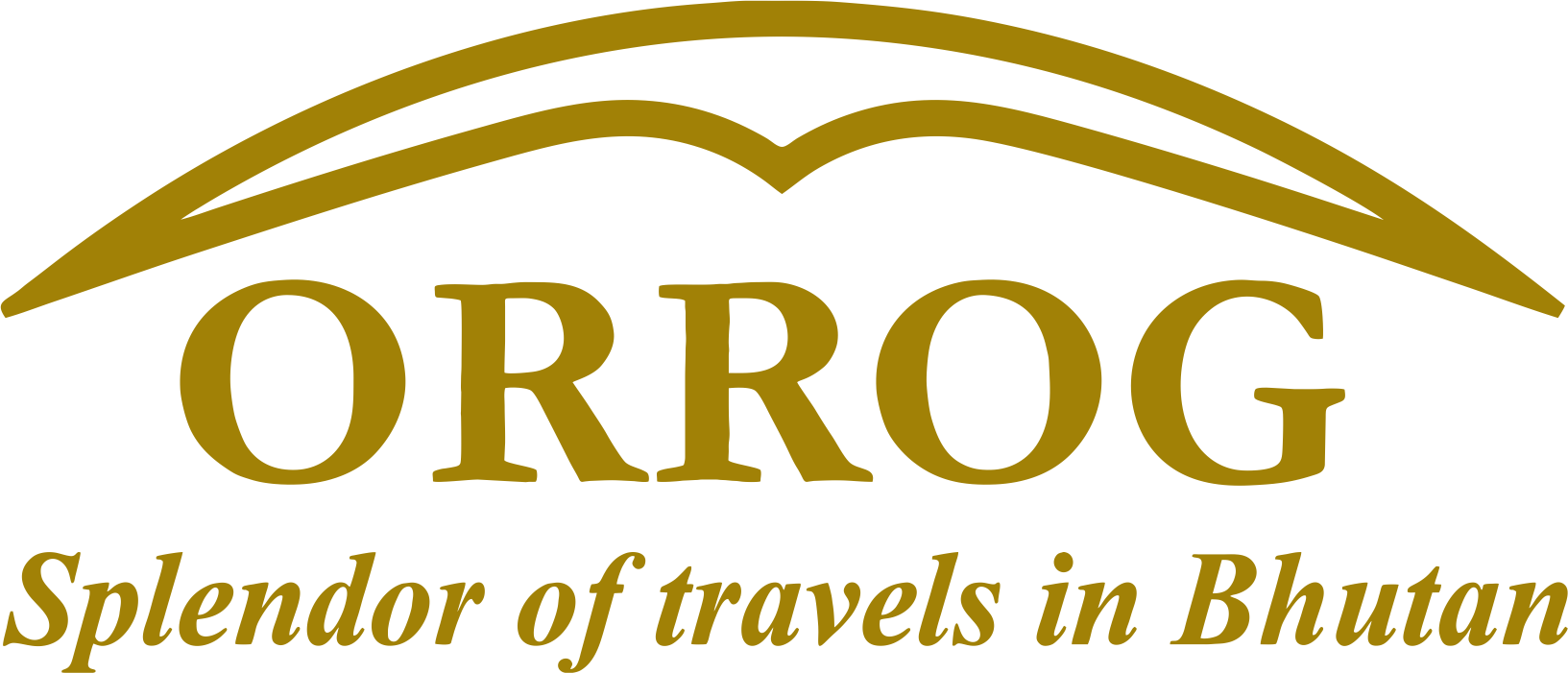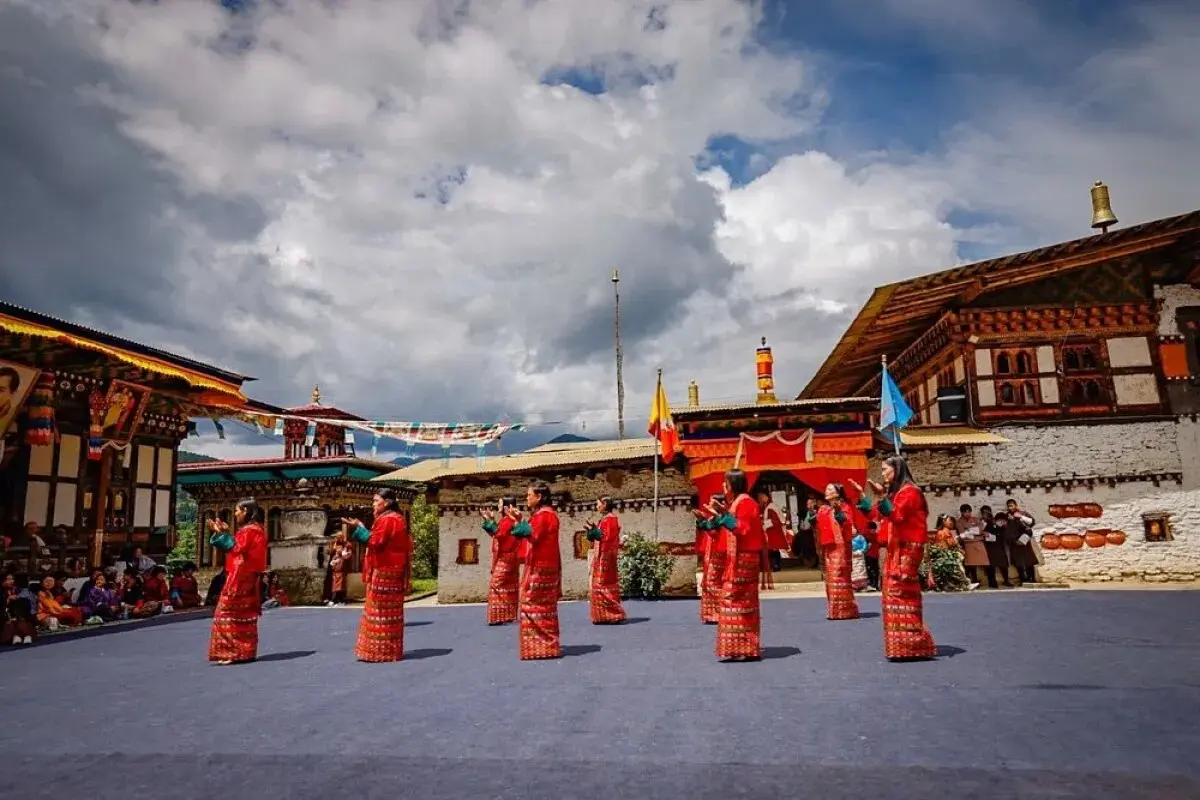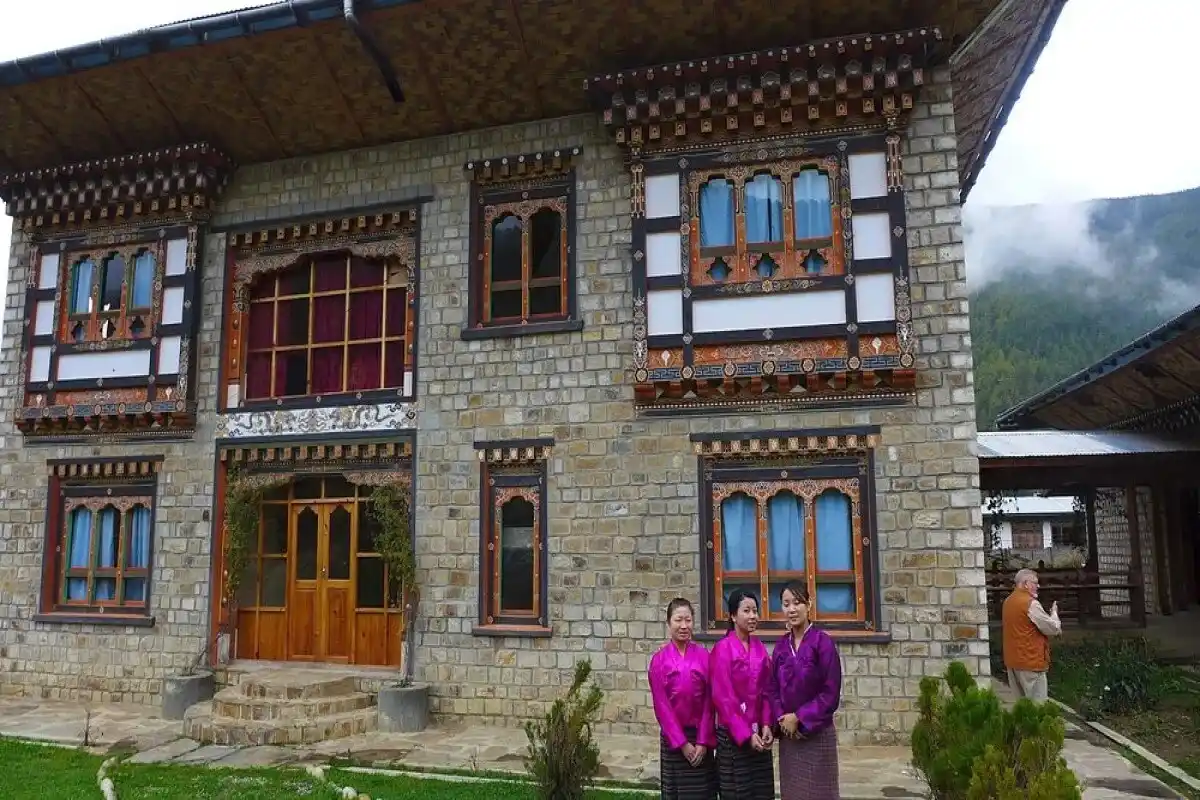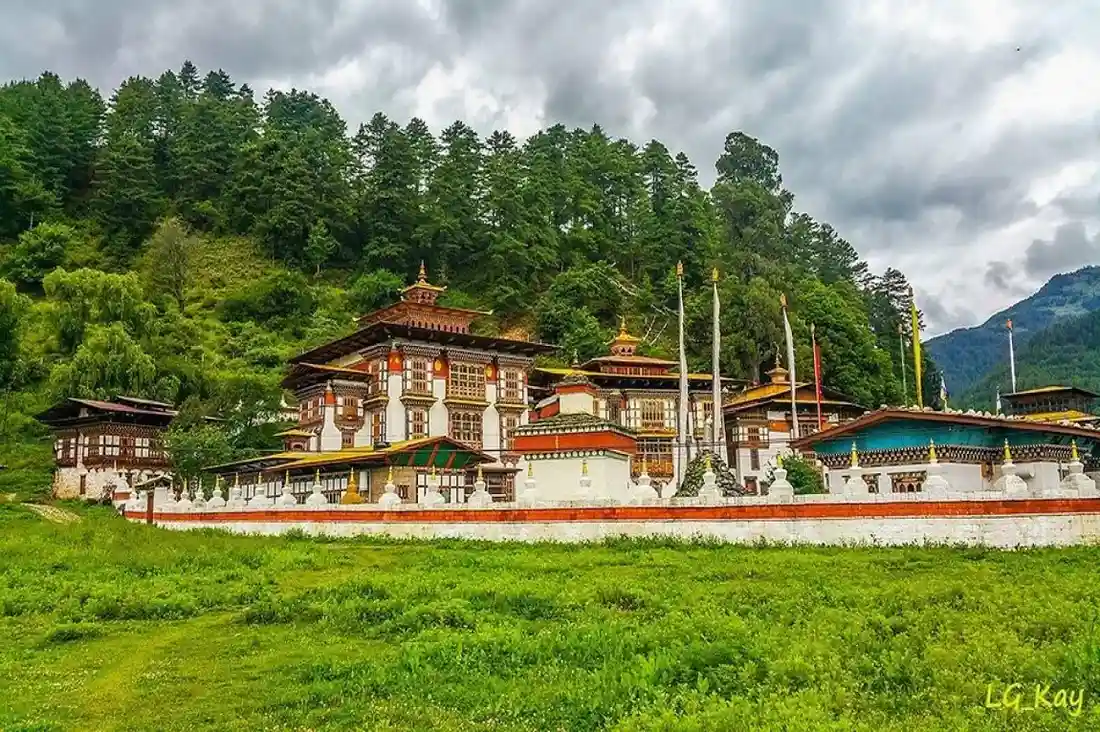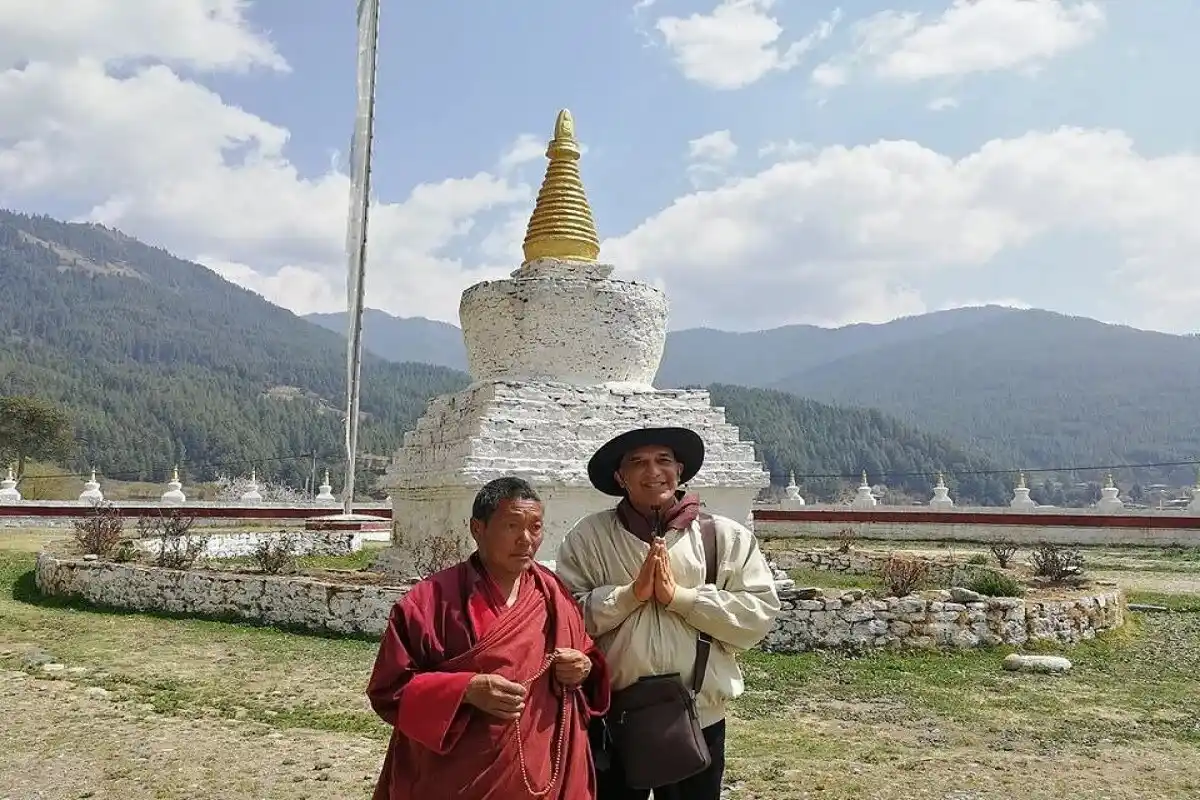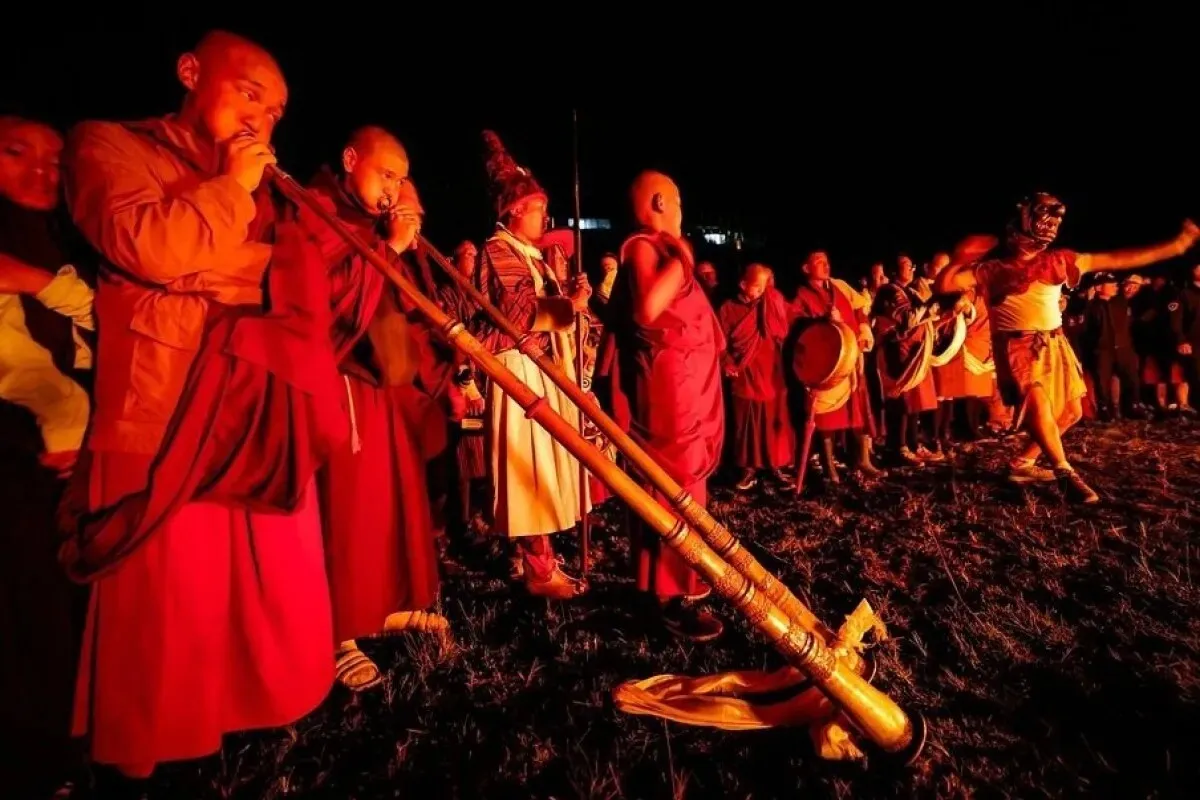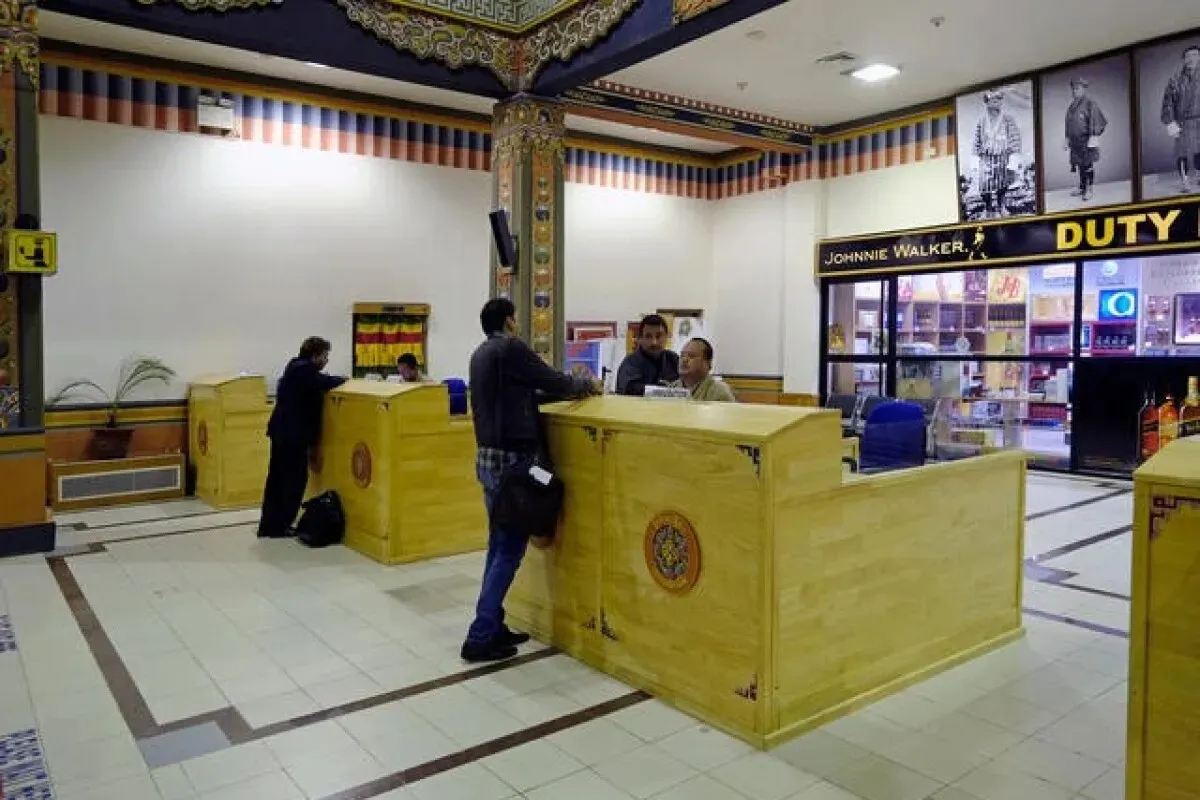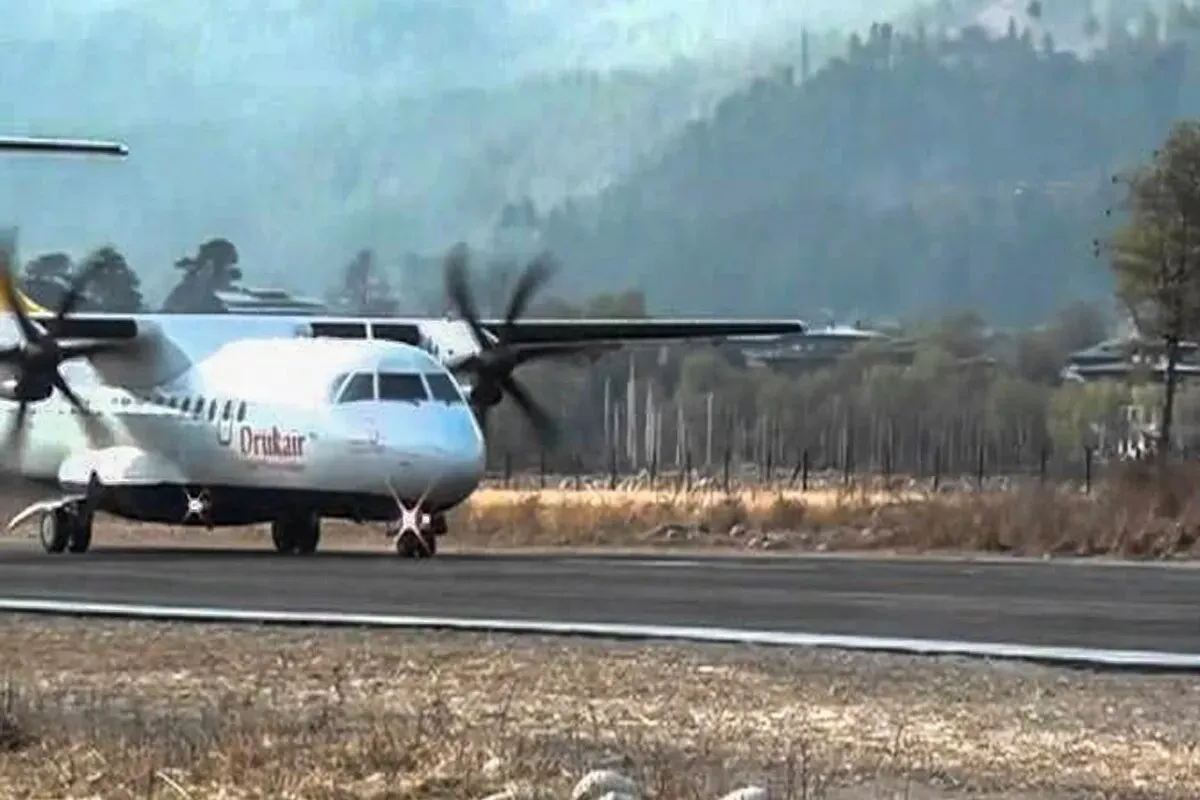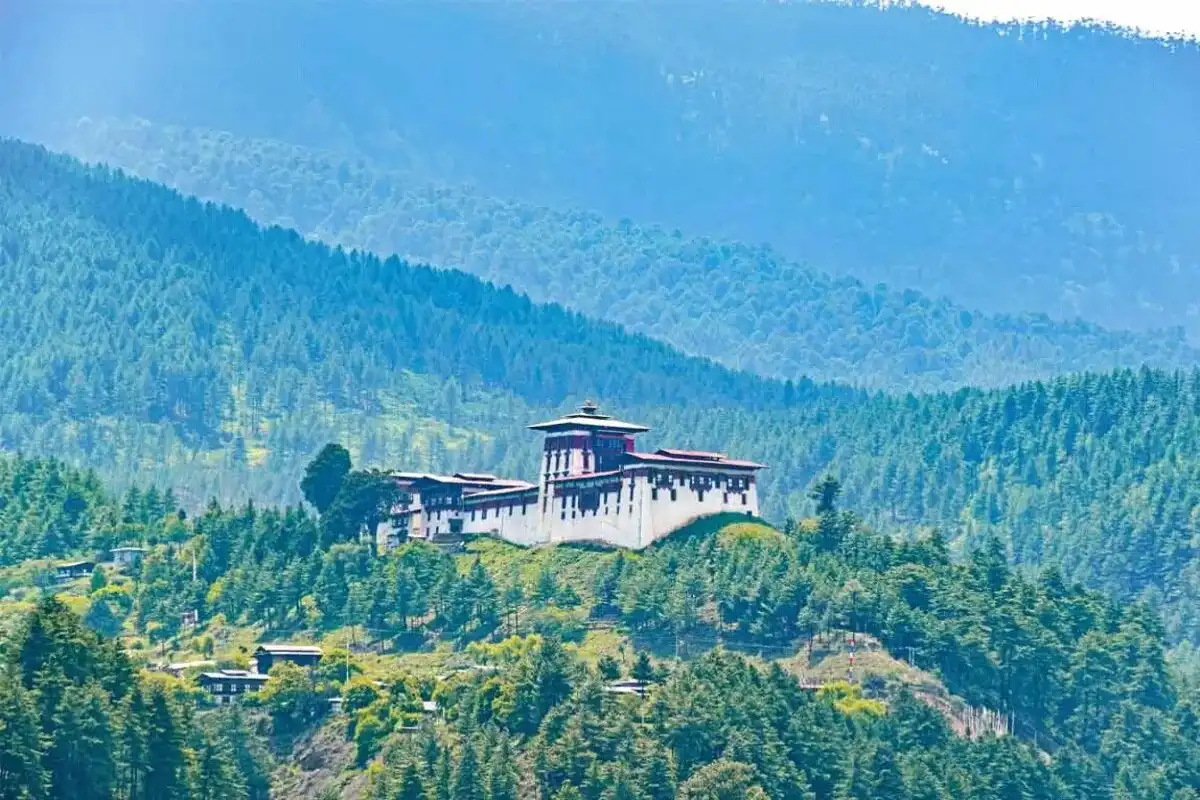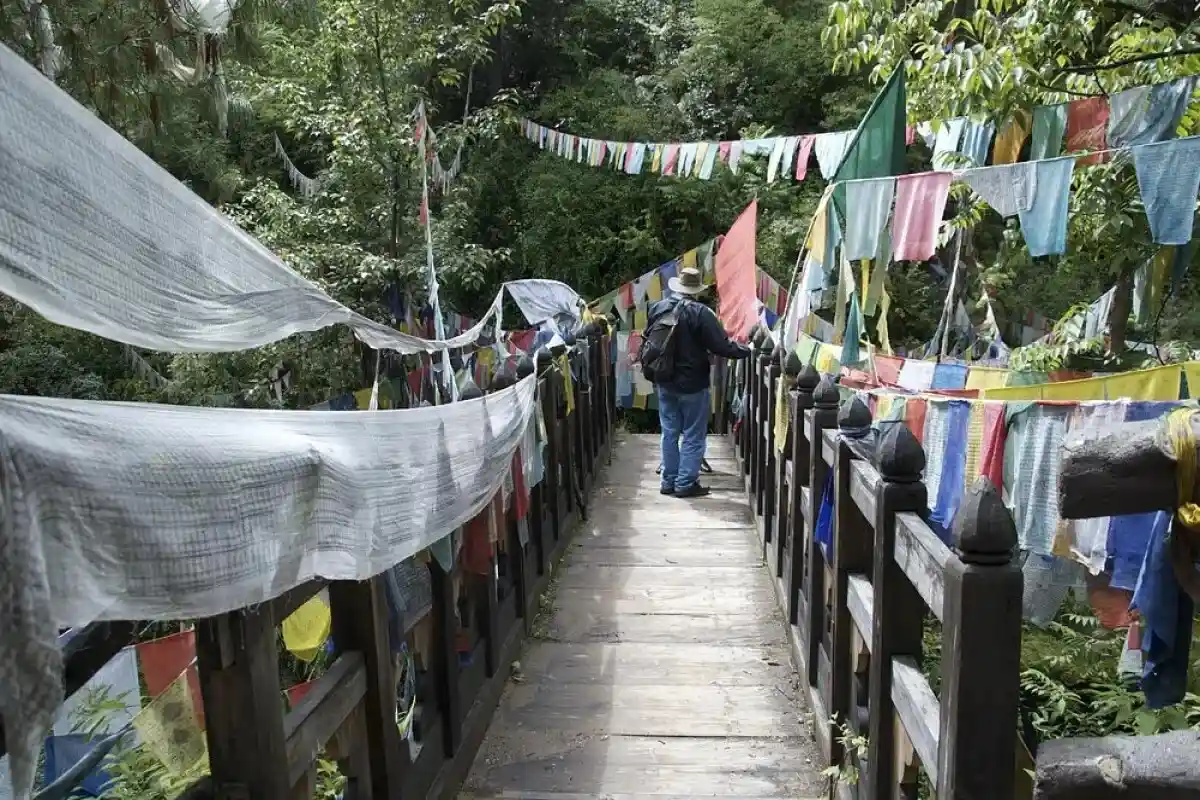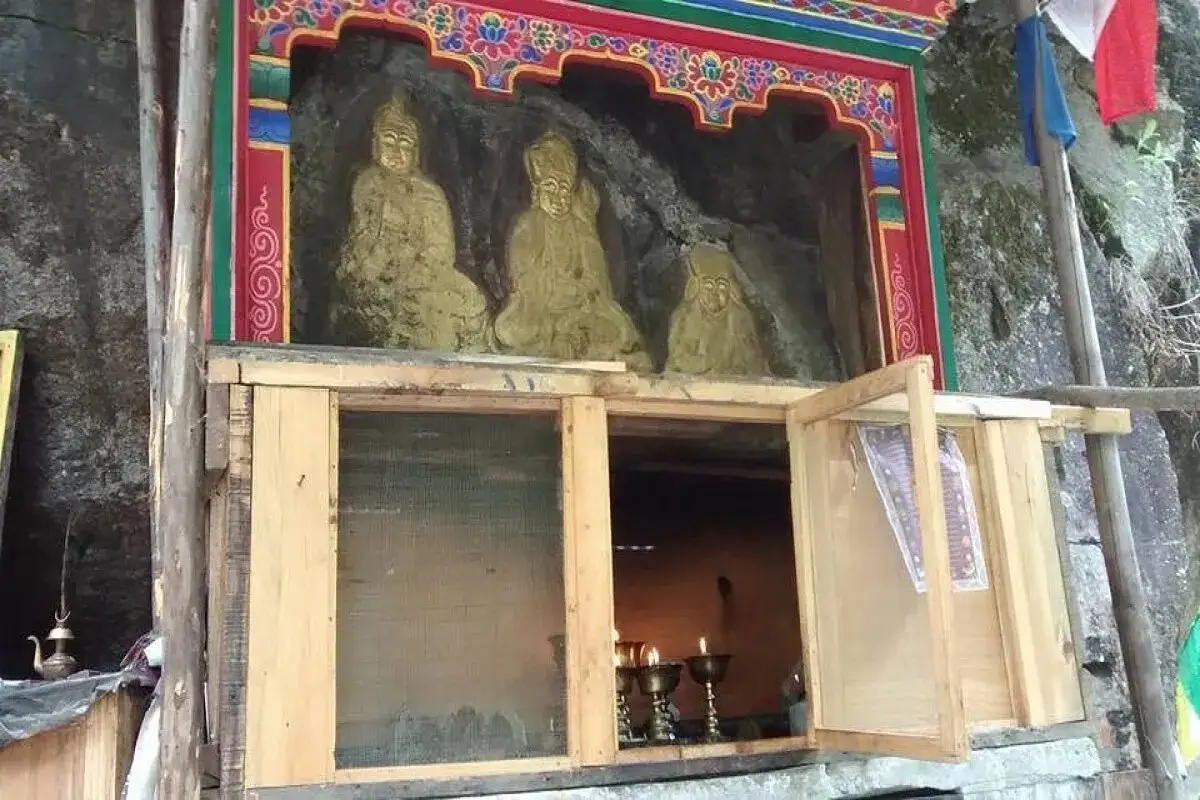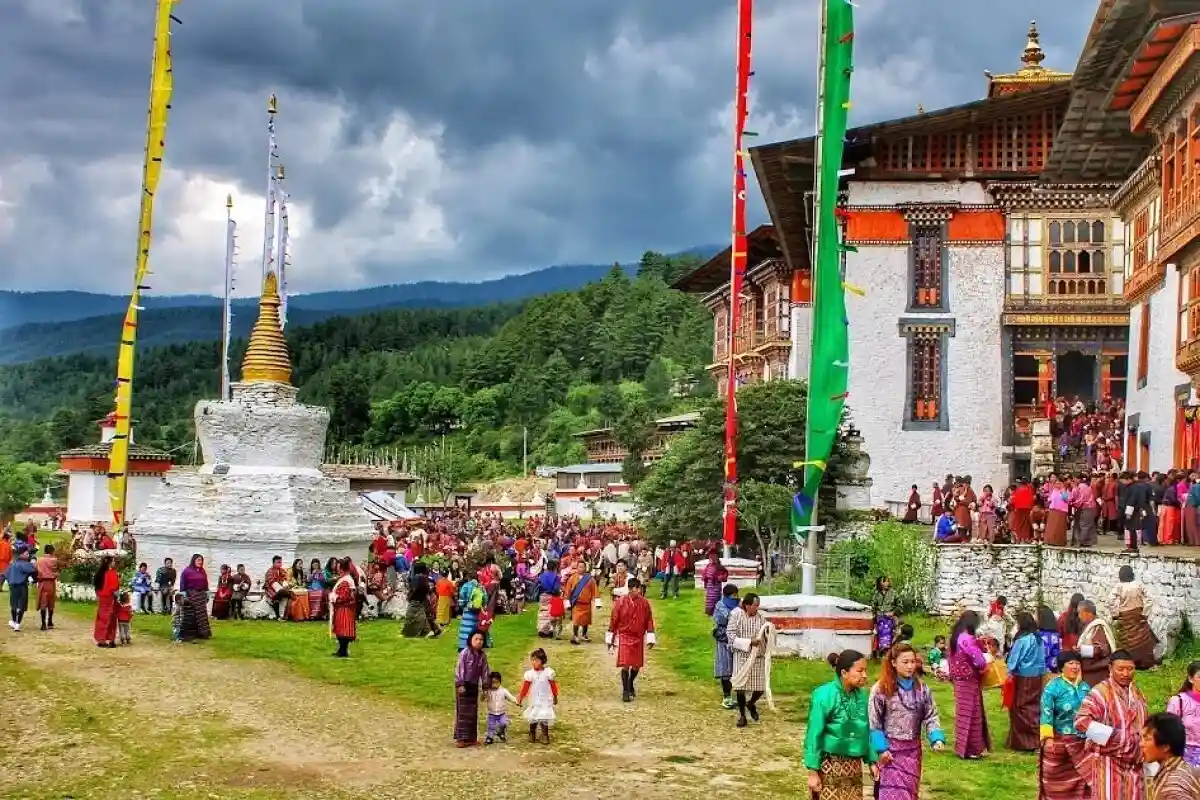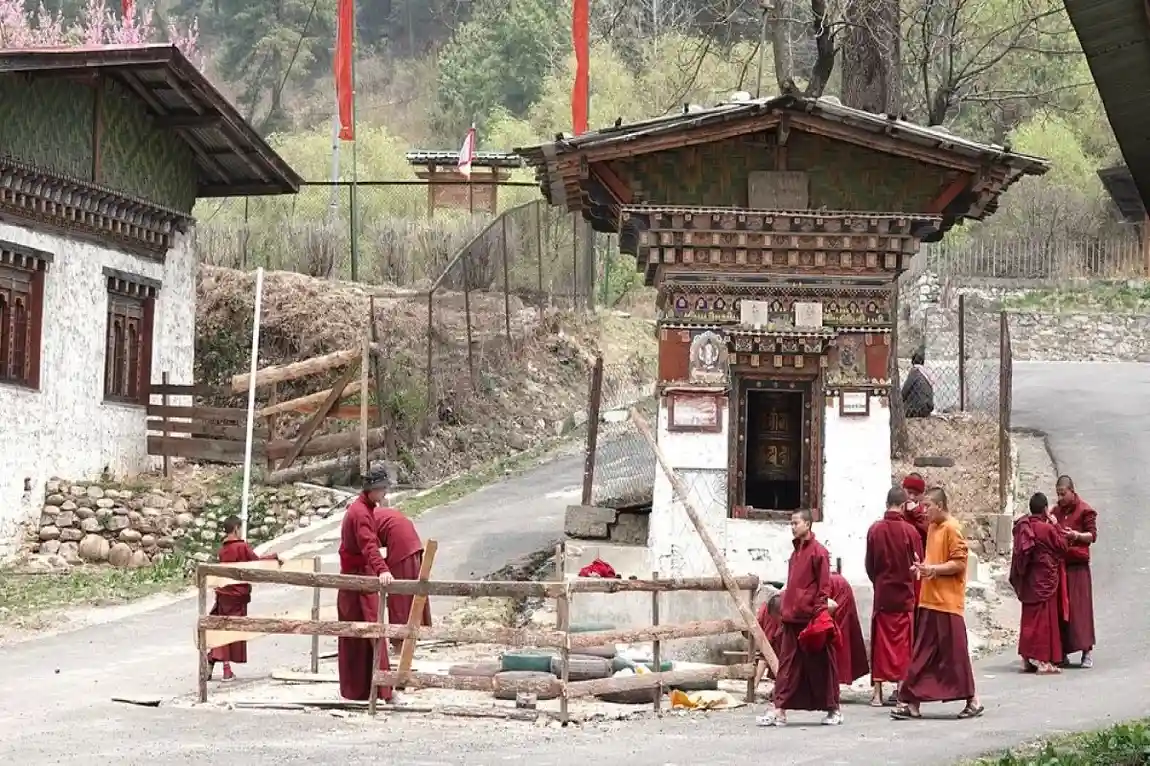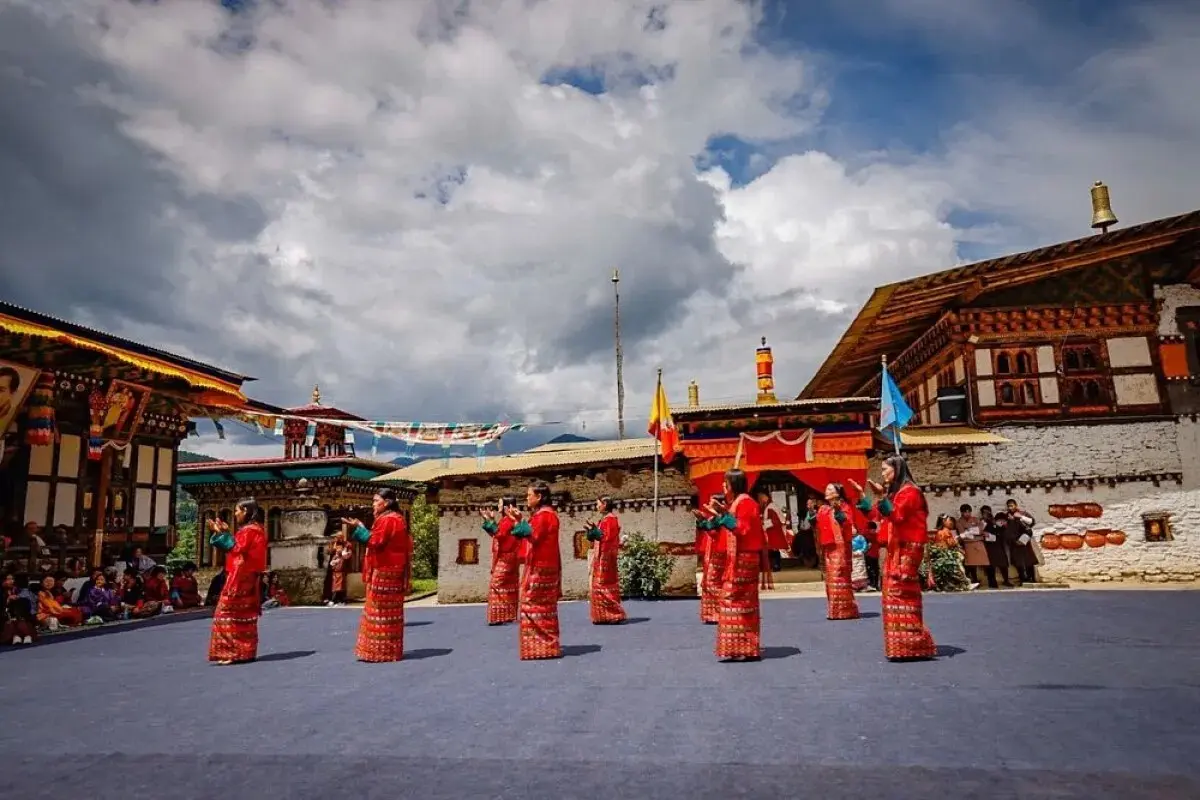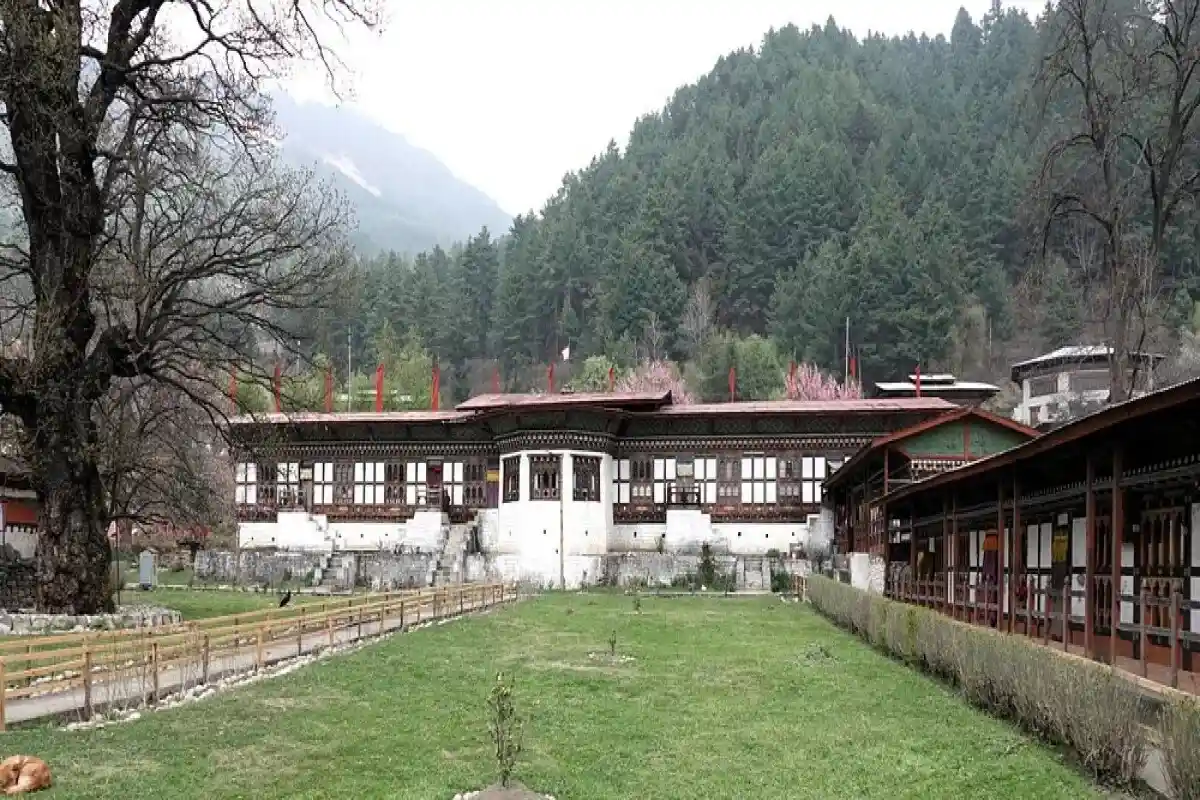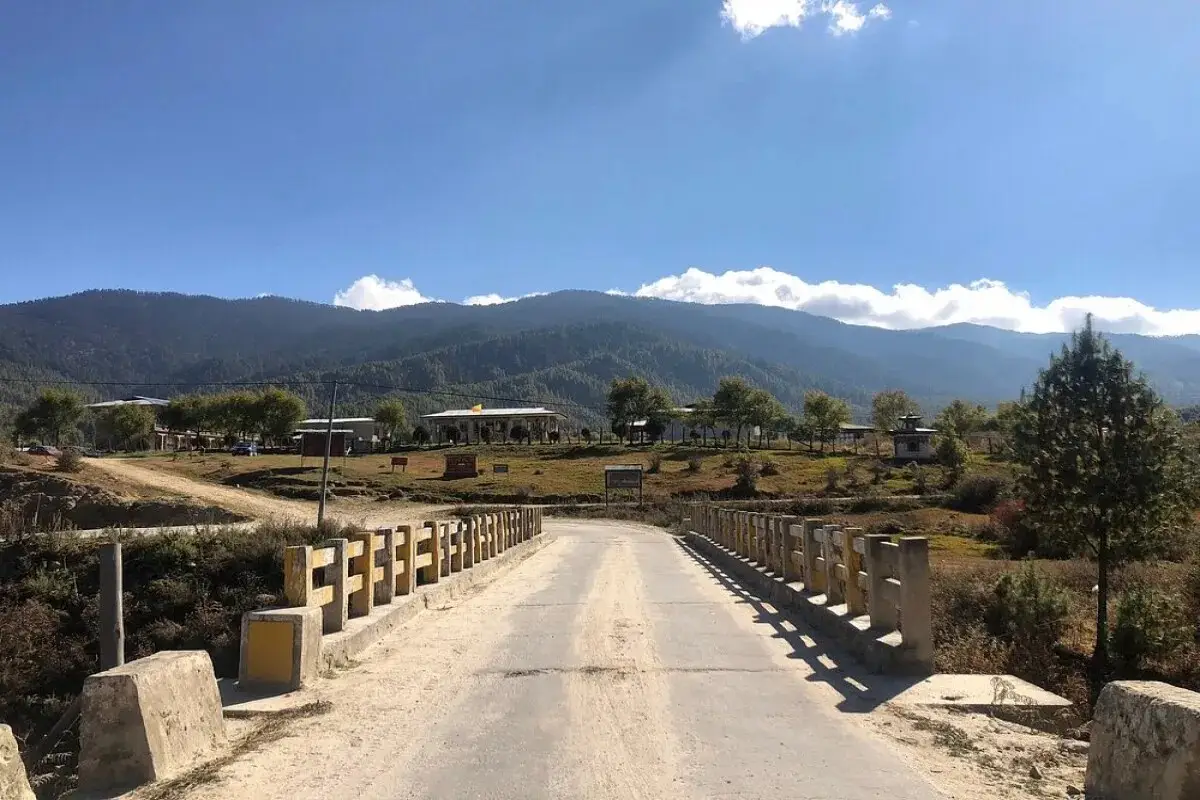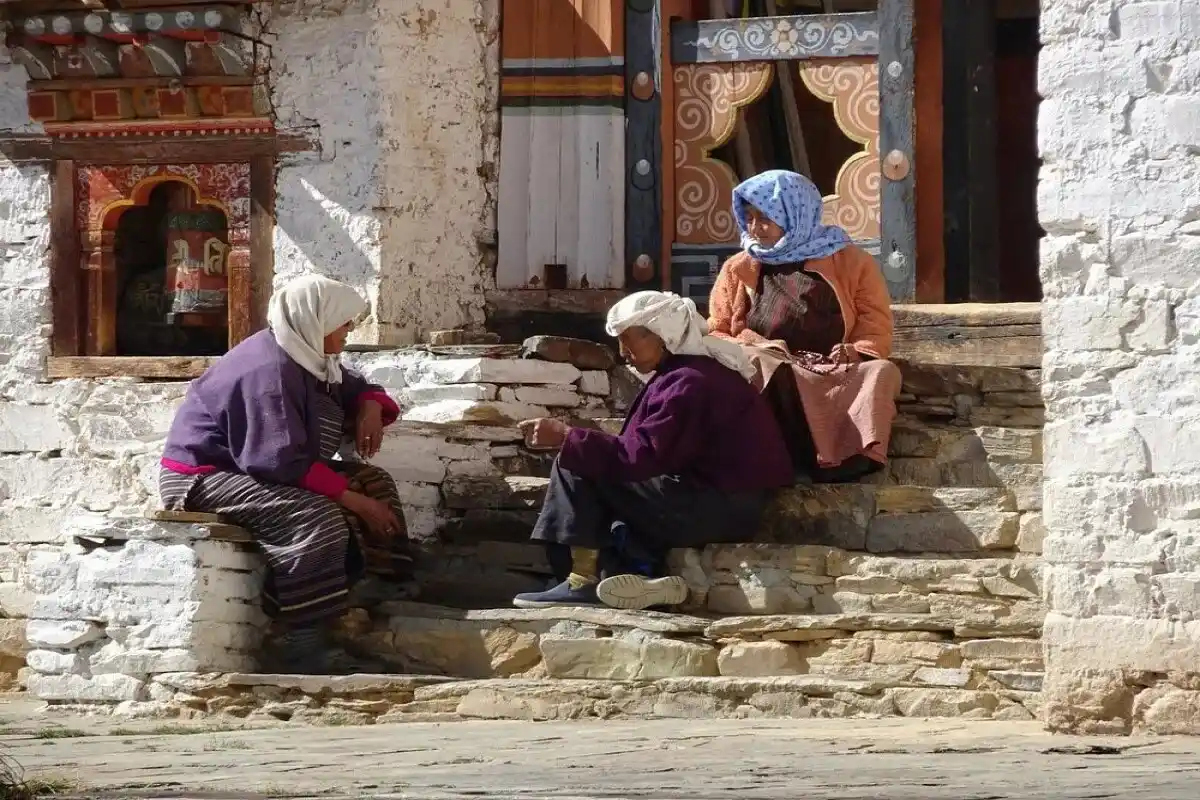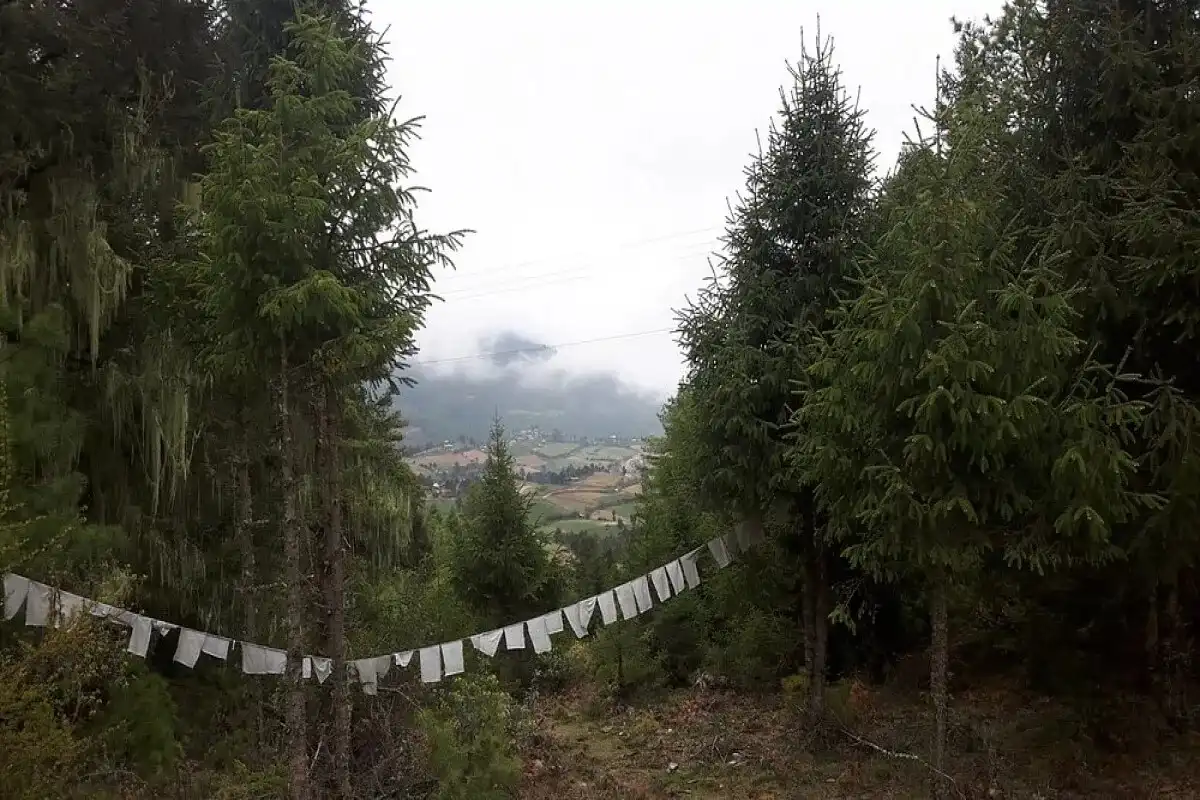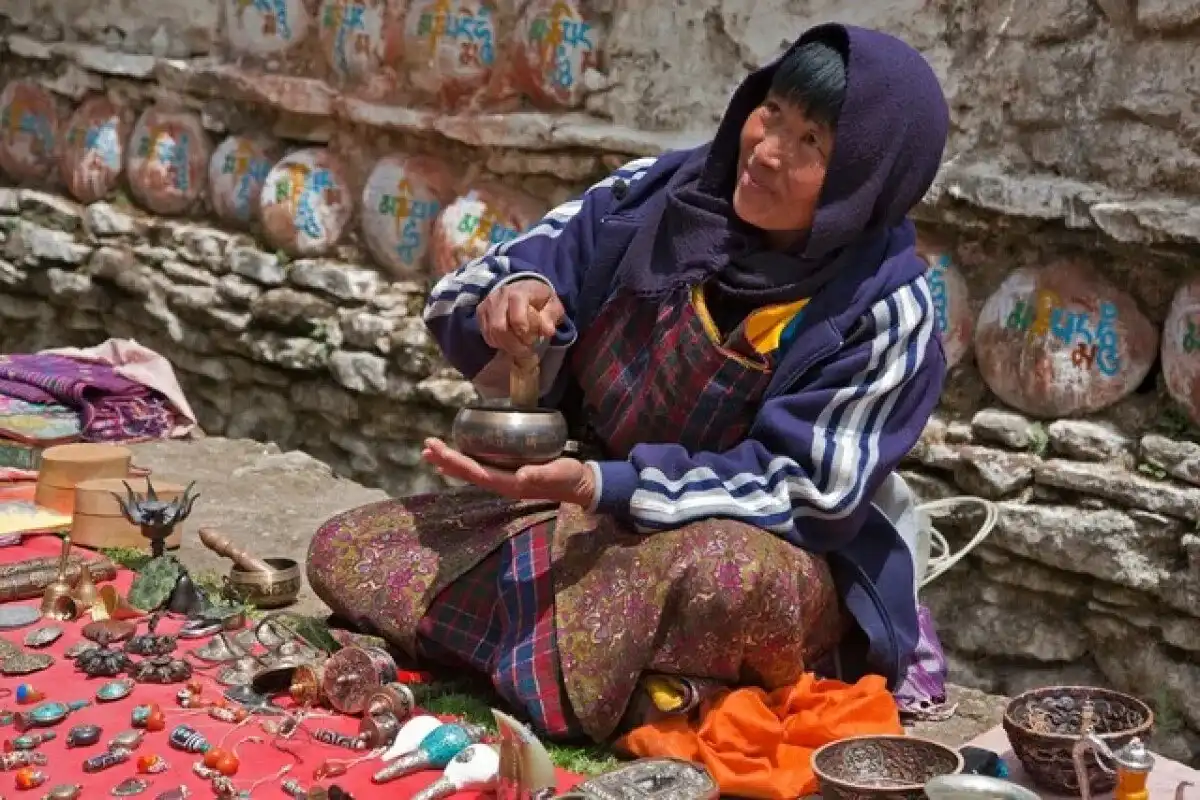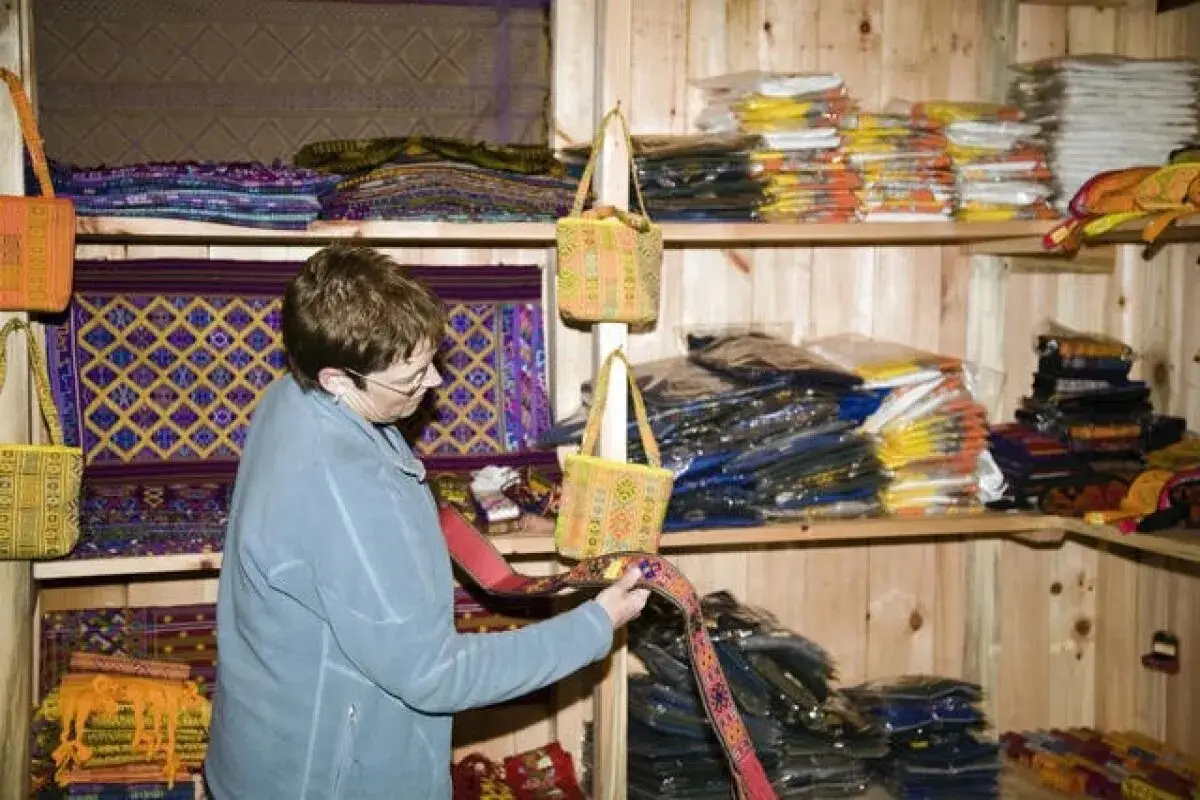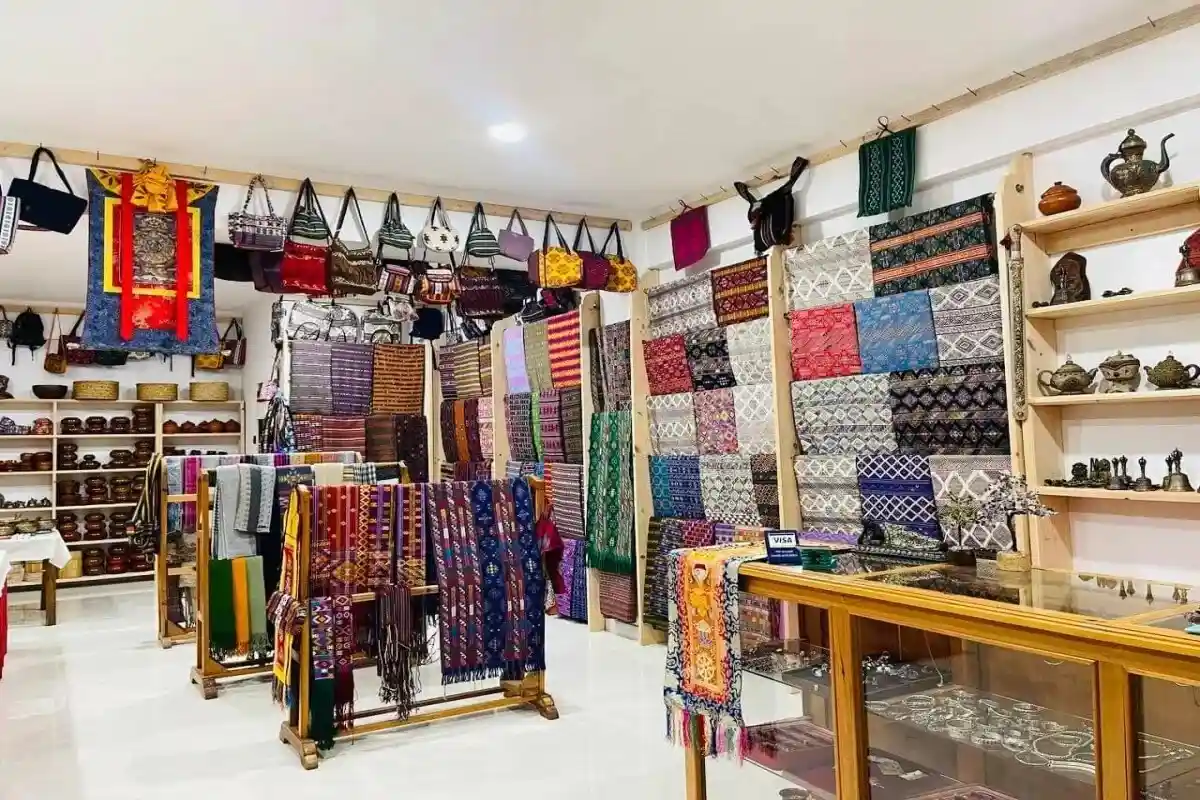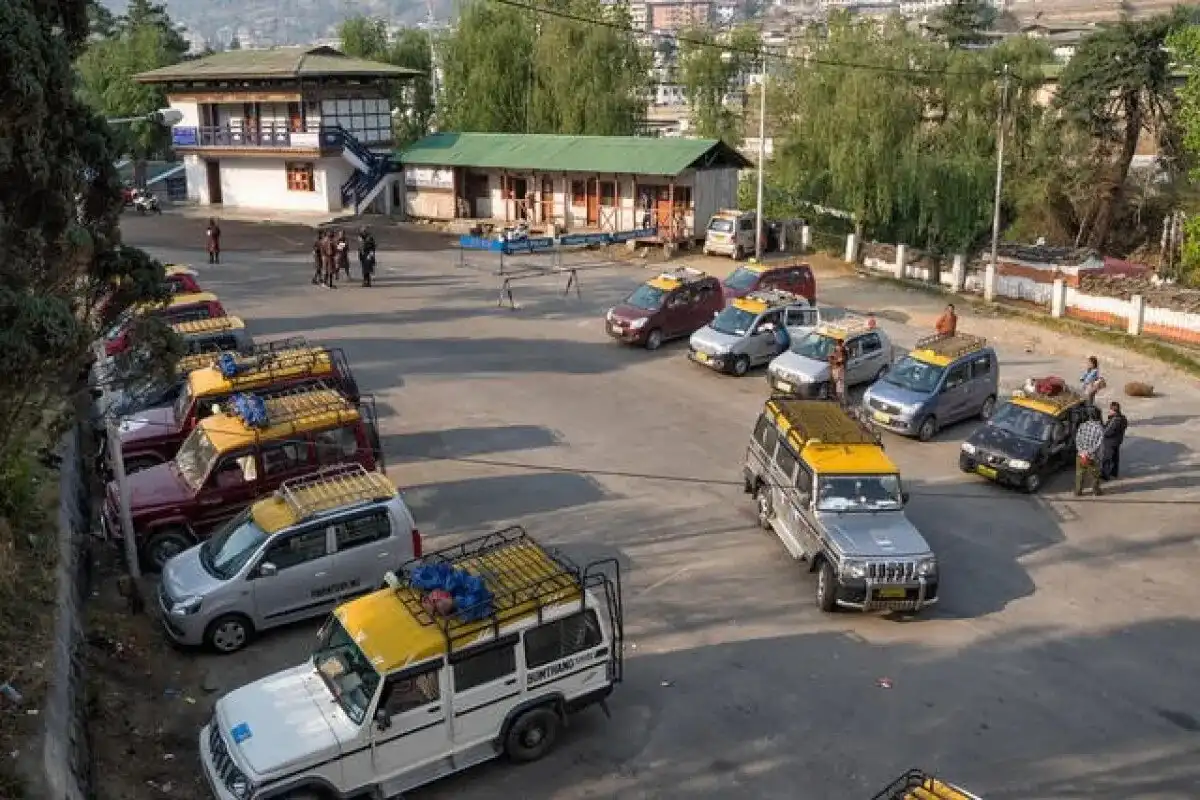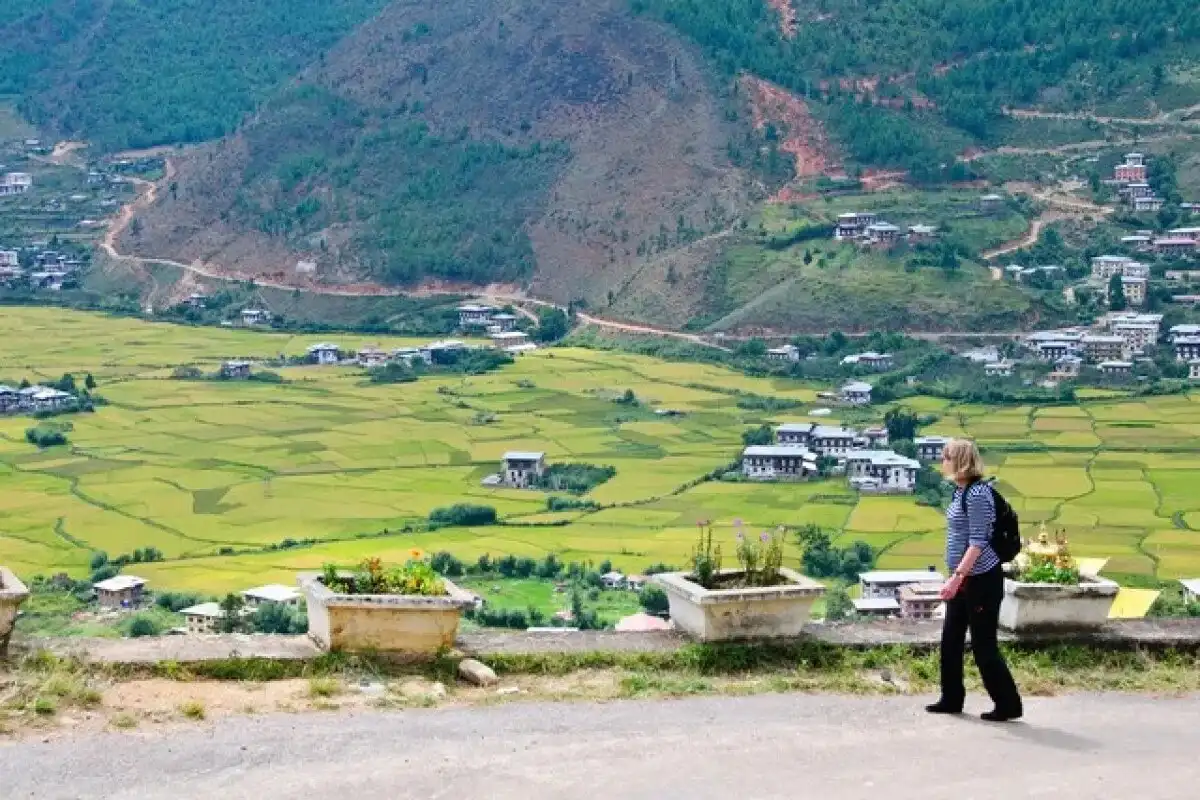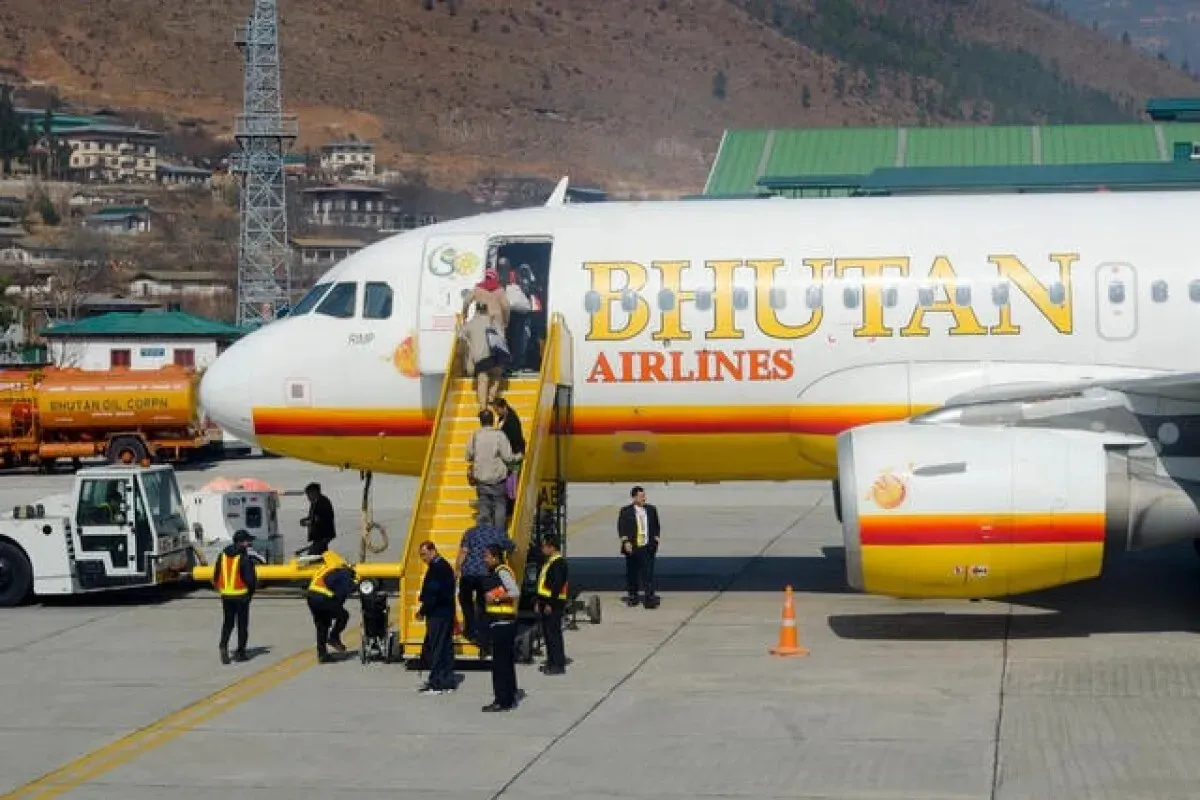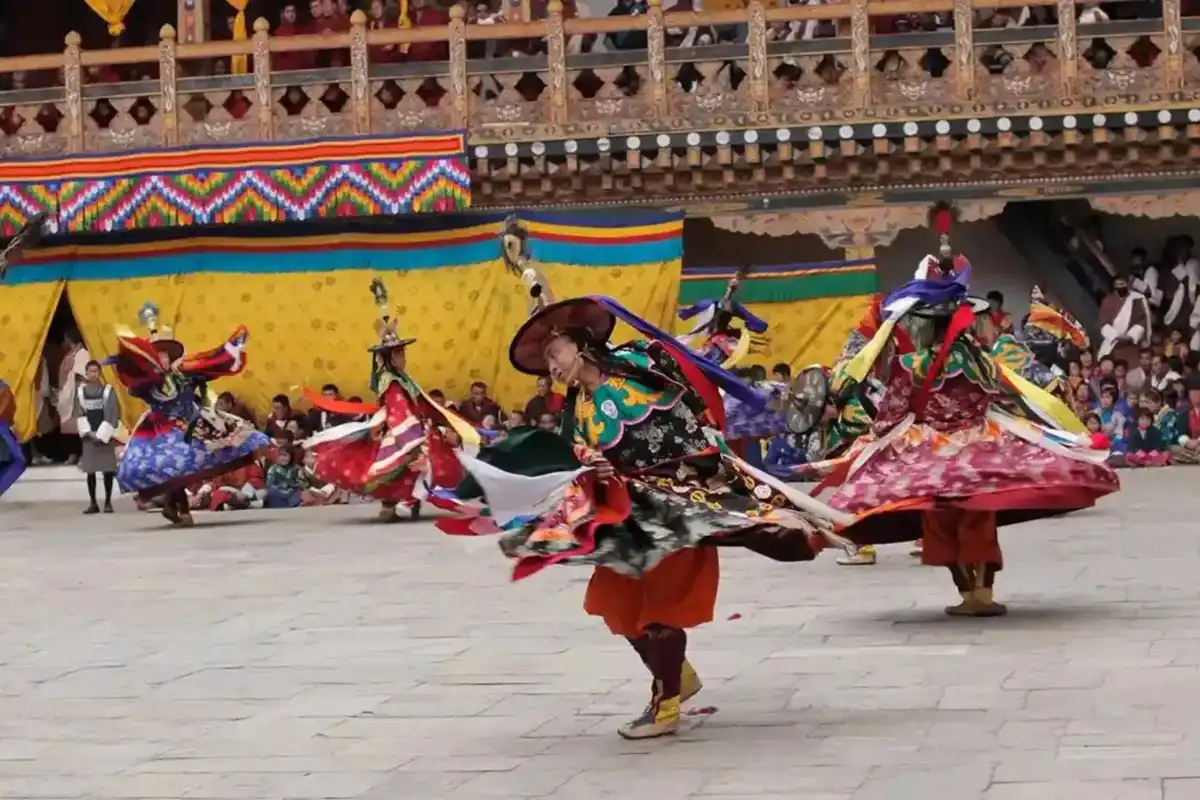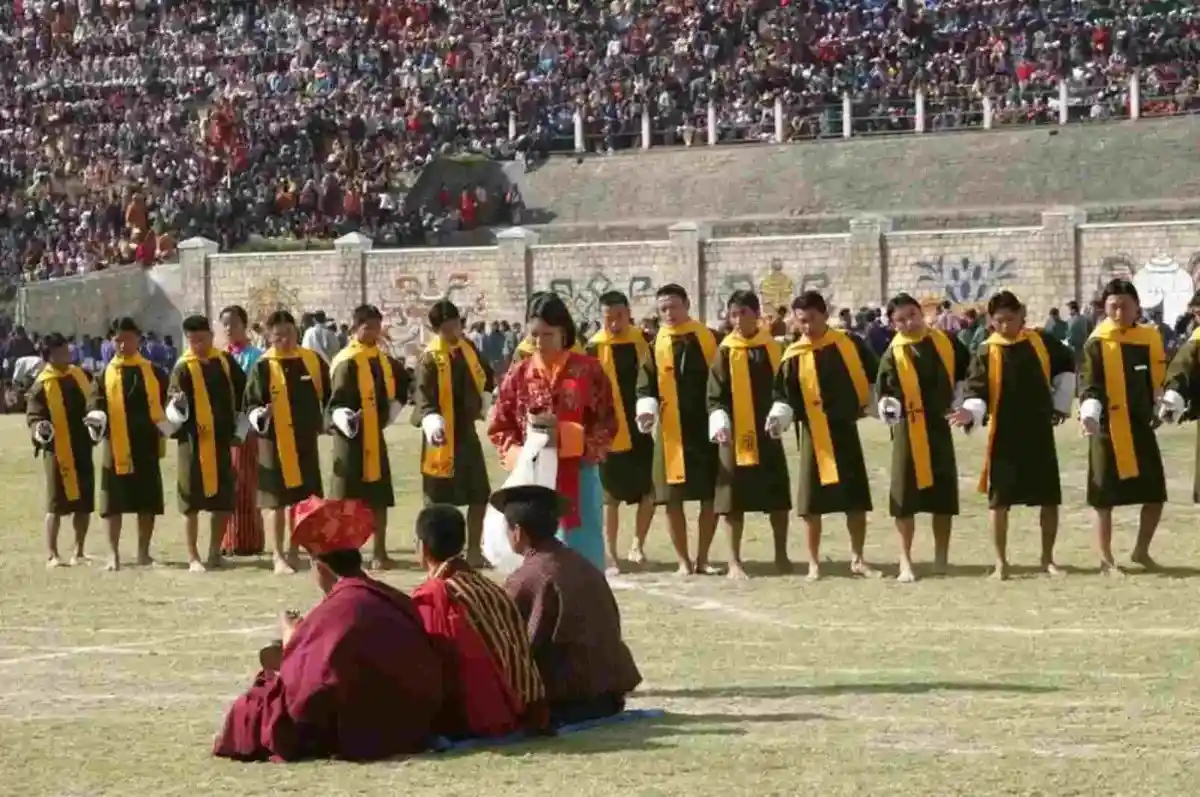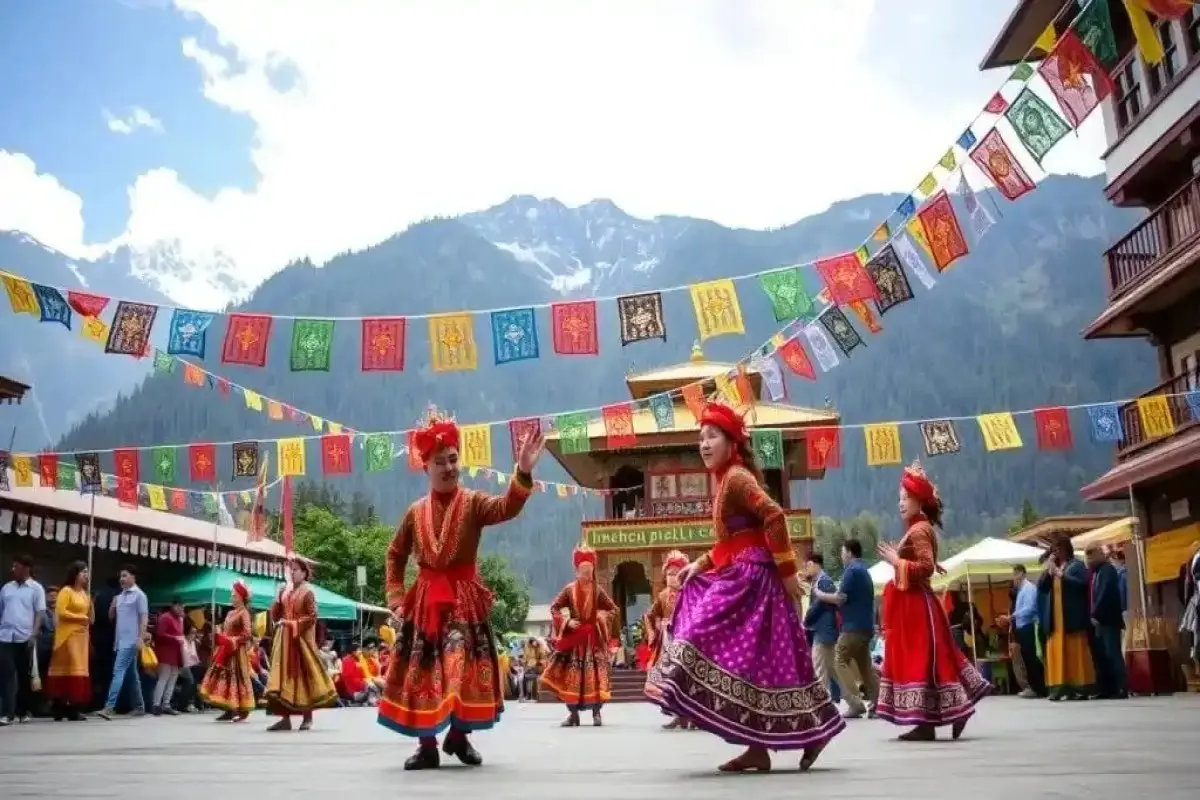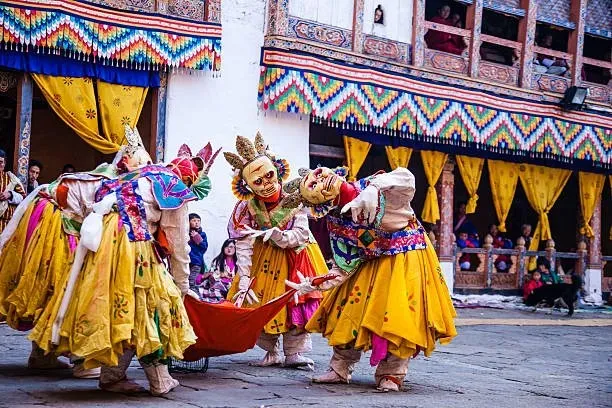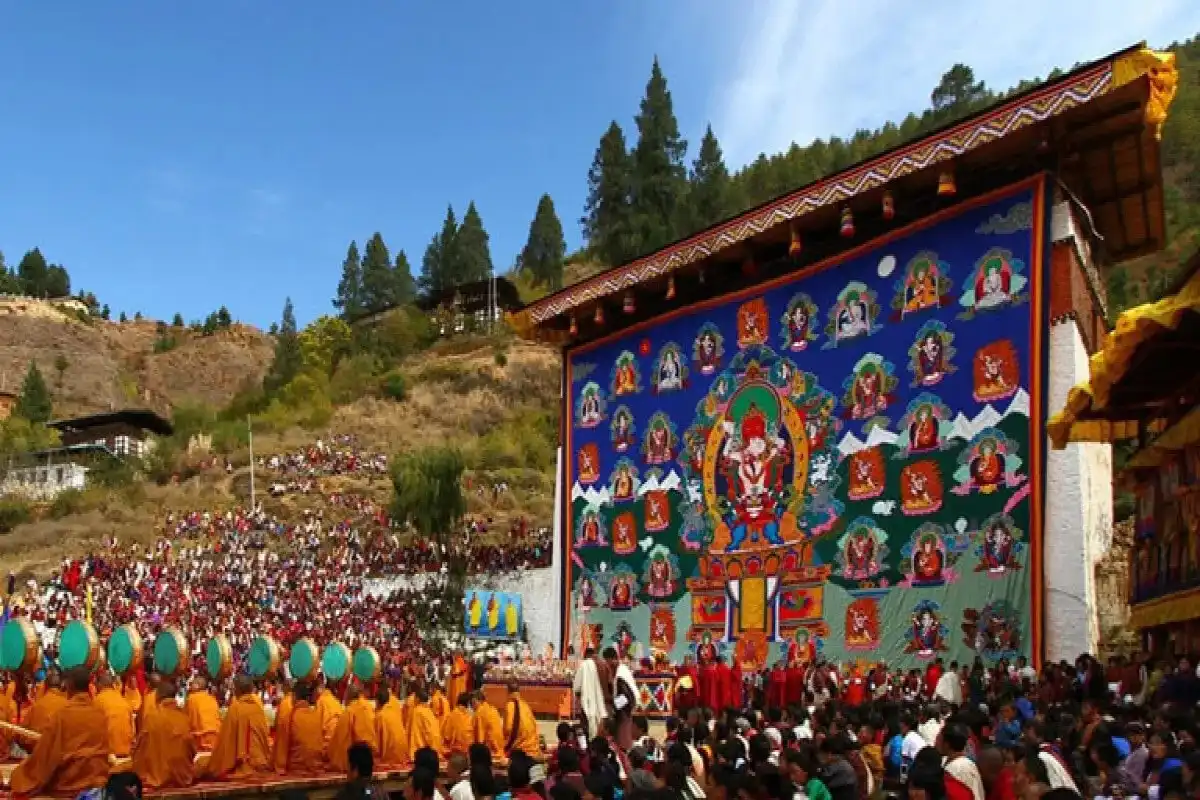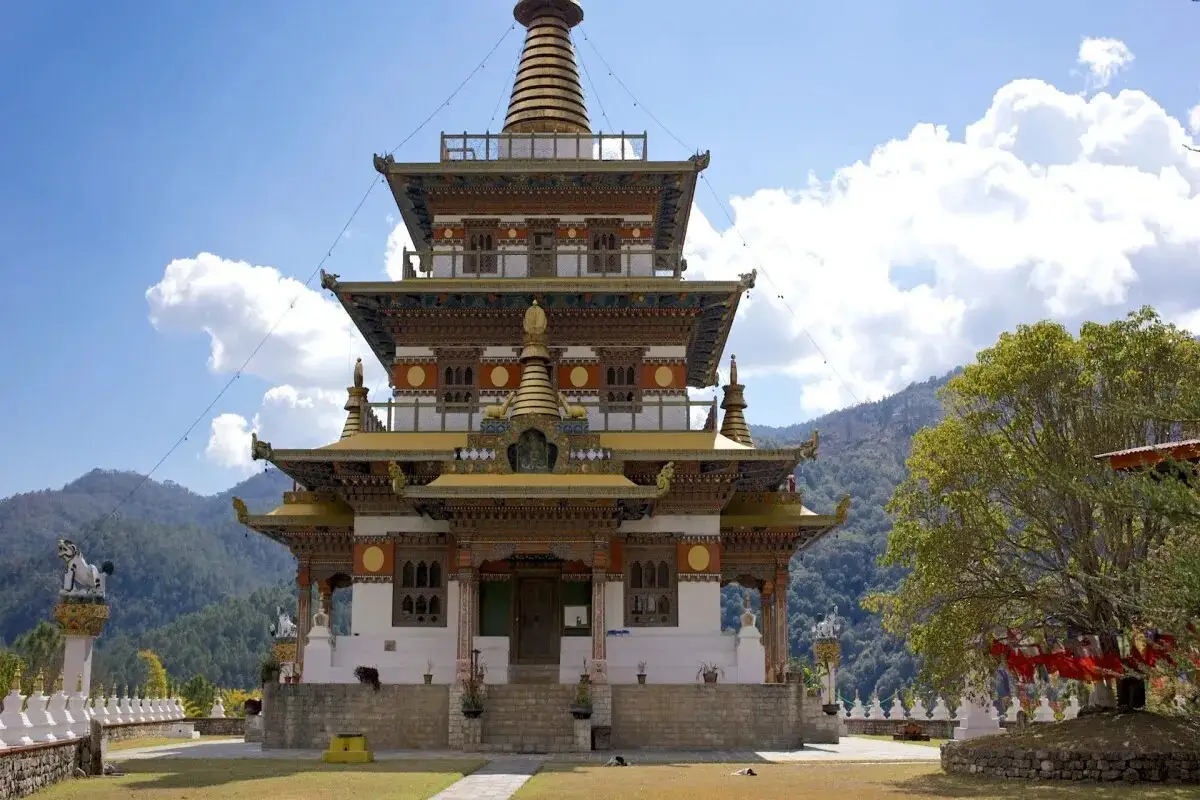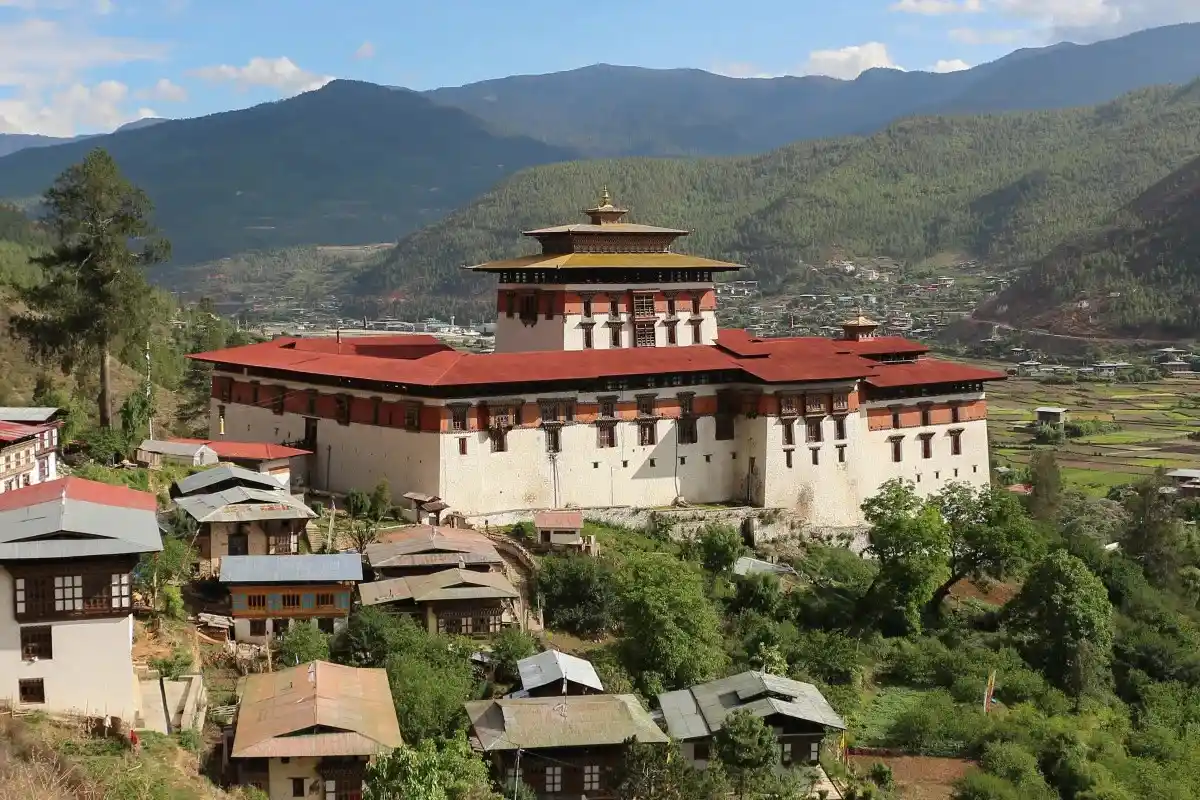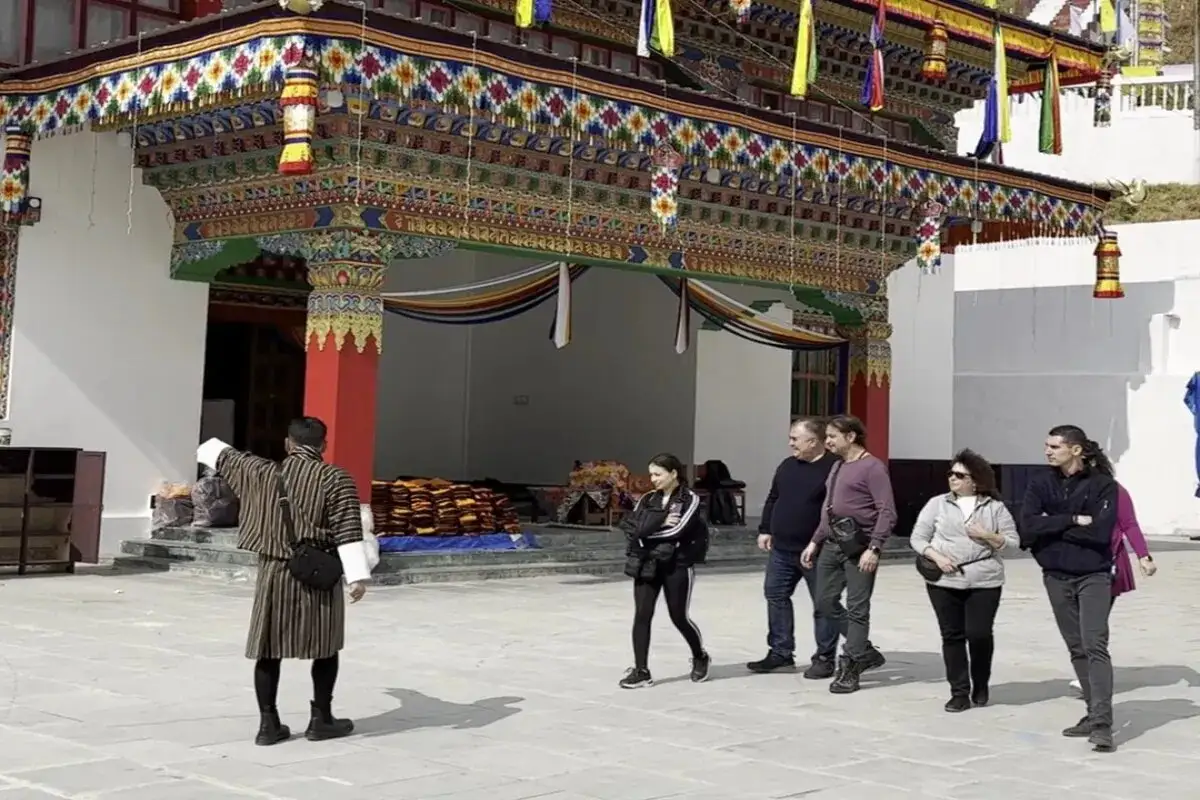Cultural Exploration of Bumthang Valley - 6 Days
Bumthang Valley is one of the historical towns, and it is home to many religious locations and historical monasteries that date back centuries. The valley is located in the middle of Bhutan and contains four small, picturesque villages. Many Buddhist saints have meditated for many years and left their imprint at the well-known holy sites of the valley. If you prefer nature, culture, and history, you must visit this beautiful valley.
Highlights
- Visit to ancient monasteries
- Explore Burning Lake
- Authentic Bhutanese food and dress
- Cultural immersion and interaction with locals
- Spiritual peace and meditation
- Cultural Significance of Bumthang Valley
Trip Overview
Once you arrive in the valley, there are several locations to be explored, from visiting Kurje Lhakhang to Tamshing Monastery. Apart from this, if you want something extra, you can hike to Bruning Lake, Ura Valley, and also participate in different festivals. You can learn traditional crafts and weaving from a skilled person. You can interact with locals and learn their principles, culture, and taste the local foods. This itinerary lets you explore, have fun, and relax, and you will also feel the excitement and peace of Bumthang.
We, the team Orrog, have created a great itinerary, which fits you according to your budget, time, and location. To make changes or book the package, contact us directly, and we will rearrange it and set up your adventure.
Quick information
Destination: Bumthang Valley
Maximum Altitude: 3,980 meters
Difficulty: Easy
Duration: 6 days
Best Season: Spring and Autumn
Accommodations: Included
Meals: Breakfast, Lunch, Dinner
Highlights of Cultural Exploration of Bumthang Valley
You will get to explore different ancient monastries along with beautiful natural landscapes of Bumthang Valley. This trip is a chance to dive deep into culture of Bumthang valley . You can also interact with locals people and enjoy local dishes of the Valley.
Visit to ancient monasteries
This tour lets you explore the valley's oldest and holiest monasteries within a few days. You will visit monasteries like Jambay Lhakhang and Kurjey Lhakhang. These sites are very peaceful and historical, and the surroundings are serene and pure. You can see monks' prayer, old paintings, statues, and hear so many stories about the past. It is a beautiful, serene walk to each monastery and is a unique journey for those who appreciate culture, nature, and quiet places.
Explore Burning Lake
One of the most precious and holy places is Burning Lake. It is not burning, but it got its name from a famous legend. There was a monk who jumped into the river with a lamp and was immersed in holy treasures, and his lamp still had flame. People visit this lake to pray and enjoy the peaceful environment.
Authentic Bhutanese food and dress
If you are a spicy lover, you will be a fan of Bhutanese food. The local people make food using the local ingredients. The popular foods include Ema Datshi, though red rice, meat, and fresh vegetables are eaten. You may drink butter tea, hot and salty tea, and one of the favorites.
The Bhutanese have unique dresses, and they are nice and neat. Men wear a Gho, and women wear a Kira, and the government encourages them to wear them in every sector. Foreigners can wear them as well, and it is a good way to feel the culture and take good photos.
Cultural immersion and interaction with locals
In this trip, you will get an opportunity to engage and interact with the locals. The local people are friendly, and by communicating with different communities, you will learn much about their lives. By immersing yourself in the Bhutanese culture, you will be able to know the rich history of the country and what the kingdom is all about.
Spiritual peace and meditation
Bumthang is a very serene and pleasant town. Anyone looking for a place to rest and unwind will find it to be a great option. In this country, many tourists come to take part in basic meditation. As the country is filled with ancient monasteries and temples, you will find monks doing spiritual practice throughout the valley. You can also participate in basic meditation. The moving prayer flags and chanting make the moment more special. It is an effective method to achieve mental and spiritual relaxation.
Explore local handicrafts
In Bumthang, you can explore local markets and purchase handicrafts. The handicrafts are created by the locals with affection and attention. They possess woolen garments, wooden vessels, and multicolored woven textiles. You can even visit small shops to see how the craft is made. Some even let you make it. It is a wonderful way to get exposed to Bhutanese culture and take home a pleasant gift or memory of your trip.
Cultural Significance of Bumthang Valley
The most significant monasteries of the country are in Bumthang, some among which are Kurje Lhakhang, Jambay Lhakhang, and Tamshing Monastery, known to the people through legendary Buddhist personalities like Guru Rinpoche and Terton Pema Lingpa. The valley is the heart of Vajrayana Buddhism, a place where the stories, things from the past, and people's way of living are preserved. The festivals are the best way to know how the Bhutanese community has achieved a total refreshment of body, soul, and soil, as we can see from performances like the Jambay Lhakhang Drup, where fire and naked dances are the characteristics of the event. There remain some of the practices in the valley where people perform arts and crafts such as Yathra weaving and wood carving, so they are the keepers of the valley's cultural heritage.
Conclusion
When you leave the Bumthang Valley, you won't just have pictures. You will take home the feeling of total peace and meaningful relationships. The spiritual vibrations of the monastic community, the friendliness of local people, and the authentic mantras of the daily routines form the deep inner layers of every tourist. The unspoiled nature, adorned with traditional shrines and accompanied by prayer flags swaying with the wind, is very attractive to the silent observer, while the same observer is refilled with a sense of freshness and pure simplicity. The memory of monks chanting in the sacred chambers and the vibrant local festivals is what the ideal tourist will take with them from Bumthang. It is to be noted that Bumthang is not only a place but a mood and a tone that heals your soul.
Once you arrive in the valley, there are several locations to be explored, from visiting Kurje Lhakhang to Tamshing Monastery. Apart from this, if you want something extra, you can hike to Bruning Lake, Ura Valley, and also participate in different festivals. You can learn traditional crafts and weaving from a skilled person. You can interact with locals and learn their principles, culture, and taste the local foods. This itinerary lets you explore, have fun, and relax, and you will also feel the excitement and peace of Bumthang.
We, the team Orrog, have created a great itinerary, which fits you according to your budget, time, and location. To make changes or book the package, contact us directly, and we will rearrange it and set up your adventure.
Quick information
Destination: Bumthang Valley
Maximum Altitude: 3,980 meters
Difficulty: Easy
Duration: 6 days
Best Season: Spring and Autumn
Accommodations: Included
Meals: Breakfast, Lunch, Dinner
Highlights of Cultural Exploration of Bumthang Valley
You will get to explore different ancient monastries along with beautiful natural landscapes of Bumthang Valley. This trip is a chance to dive deep into culture of Bumthang valley . You can also interact with locals people and enjoy local dishes of the Valley.
Visit to ancient monasteries
This tour lets you explore the valley's oldest and holiest monasteries within a few days. You will visit monasteries like Jambay Lhakhang and Kurjey Lhakhang. These sites are very peaceful and historical, and the surroundings are serene and pure. You can see monks' prayer, old paintings, statues, and hear so many stories about the past. It is a beautiful, serene walk to each monastery and is a unique journey for those who appreciate culture, nature, and quiet places.
Explore Burning Lake
One of the most precious and holy places is Burning Lake. It is not burning, but it got its name from a famous legend. There was a monk who jumped into the river with a lamp and was immersed in holy treasures, and his lamp still had flame. People visit this lake to pray and enjoy the peaceful environment.
Authentic Bhutanese food and dress
If you are a spicy lover, you will be a fan of Bhutanese food. The local people make food using the local ingredients. The popular foods include Ema Datshi, though red rice, meat, and fresh vegetables are eaten. You may drink butter tea, hot and salty tea, and one of the favorites.
The Bhutanese have unique dresses, and they are nice and neat. Men wear a Gho, and women wear a Kira, and the government encourages them to wear them in every sector. Foreigners can wear them as well, and it is a good way to feel the culture and take good photos.
Cultural immersion and interaction with locals
In this trip, you will get an opportunity to engage and interact with the locals. The local people are friendly, and by communicating with different communities, you will learn much about their lives. By immersing yourself in the Bhutanese culture, you will be able to know the rich history of the country and what the kingdom is all about.
Spiritual peace and meditation
Bumthang is a very serene and pleasant town. Anyone looking for a place to rest and unwind will find it to be a great option. In this country, many tourists come to take part in basic meditation. As the country is filled with ancient monasteries and temples, you will find monks doing spiritual practice throughout the valley. You can also participate in basic meditation. The moving prayer flags and chanting make the moment more special. It is an effective method to achieve mental and spiritual relaxation.
Explore local handicrafts
In Bumthang, you can explore local markets and purchase handicrafts. The handicrafts are created by the locals with affection and attention. They possess woolen garments, wooden vessels, and multicolored woven textiles. You can even visit small shops to see how the craft is made. Some even let you make it. It is a wonderful way to get exposed to Bhutanese culture and take home a pleasant gift or memory of your trip.
Cultural Significance of Bumthang Valley
The most significant monasteries of the country are in Bumthang, some among which are Kurje Lhakhang, Jambay Lhakhang, and Tamshing Monastery, known to the people through legendary Buddhist personalities like Guru Rinpoche and Terton Pema Lingpa. The valley is the heart of Vajrayana Buddhism, a place where the stories, things from the past, and people's way of living are preserved. The festivals are the best way to know how the Bhutanese community has achieved a total refreshment of body, soul, and soil, as we can see from performances like the Jambay Lhakhang Drup, where fire and naked dances are the characteristics of the event. There remain some of the practices in the valley where people perform arts and crafts such as Yathra weaving and wood carving, so they are the keepers of the valley's cultural heritage.
Conclusion
When you leave the Bumthang Valley, you won't just have pictures. You will take home the feeling of total peace and meaningful relationships. The spiritual vibrations of the monastic community, the friendliness of local people, and the authentic mantras of the daily routines form the deep inner layers of every tourist. The unspoiled nature, adorned with traditional shrines and accompanied by prayer flags swaying with the wind, is very attractive to the silent observer, while the same observer is refilled with a sense of freshness and pure simplicity. The memory of monks chanting in the sacred chambers and the vibrant local festivals is what the ideal tourist will take with them from Bumthang. It is to be noted that Bumthang is not only a place but a mood and a tone that heals your soul.
Short Itinerary
Arrive in Paro and fly to Bumthang, explore the local bazaar
Hike to Burning Lake, enjoy nature and visit Kurje Lhakhang for meditation
Morning prayers at Tamshing Monastery, visit Jakar Dzong, and explore nearby villages
Full-day hike to Ura Valley,visit old houses and temples, interact with locals
Explore local handicraft schools, visit local homes and try traditional dishes
Drive back to Paro and depart from Bhutan
Cultural Exploration of Bumthang Valley Itinerary
On this day, you will arrive at Paro Airport from your current location. You will then meet with a guide who will greet you and help with the bags. After that, you will be transported to our office. You may unwind and be refreshed once you get to the office. After having coffee, you will board a domestic flight. When viewed from above, the flight provides a breathtaking panorama of Bhutan. Individuals from Bhutan can arrive directly in Bumthang.
You will land in Bumthang after a quite brief flight. You will meet with your guide at the airport, and the guide will drop you off at the accommodation. You will then check in, put your bags, and eat lunch. You can take a rest and prepare for your journey the next day.You can explore the local bazaar in the valley. Here, you can interact with local people . After exploring, you will return to the hotel, have a meal, and relax for tonight.
Your day will start after the completion of breakfast. Afterwards, you will begin the hike. You will traverse a forest area where you can see different types of birds. After finishing a lengthy hike, you will reach the lake. Upon arrival, you will see a superb view of the environment from the vantage point. Additionally, you may express a wish and burn candles, and immerse yourself in picturesque surroundings. You can also capture some photos, then move towards the Kurje Lhakhang.
After a short hike, you will reach Kurje Lhakhang. At this location, you can see an imprint of the Guru in the huge stone. Here, you can learn the history and its significance, and also meditate for some hours. Once you have finished exploring, you will go back to the hotel and end your day.
You will rise early today. Then, you will proceed to the Monastery. Within a short period, you will arrive at the monastery. You will join the monks in chanting, meditation, and prayer when you arrive. Then, you will explore the monastery, and the guide will describe its past and importance. After breakfast, you will make your way to the Jakar Dzong.
Once you reach the fort, you will see a big white building. From this location, you can see the beautiful view of the valley and click pictures. Afterwards, do a little exploration of the villages nearby, where you can observe the local people, communicate with them, and get to know their customs.
Early in the morning, after having breakfast, you will begin your hike to the Ura Valley and will pass across the beautiful forests with beautiful scenery. Also, you will get to witness natural habitats across the forests. After hiking for several hours, you will reach Shell Thang La Pass. From here, you will receive a panoramic view of different peaks. You can take a break in the Pass, capture some photos, and eat some snacks.
As you descend from this pass, you will eventually arrive in the valley. Here, you will visit the temples and explore the old stone houses of the village. You can also interact with villagers, learn their culture and customs, and learn weaving. Then, you will enjoy your lunch and be back. You will follow the same path, and along the trail, you can observe a yak and a sheep herder. After a lengthy journey, you will reach town and relax in the room.
Today, you can wake up in a relaxed way and then eat lunch. In the afternoon, with the guide, you will move towards the handicrafts schools. Here, you can learn weaving and woodcarving, and also try to make a small piece and take it home. You will receive instructions from the instructor on how to make it.
Then, you will visit the local places and meet the people there. They will show you their traditions, lifestyle, and customs, and you can try their special dishes, which will enable you to learn about their lives. Next, you can go to the shop and get some presents for your friends and family.
You have to wake up early in the morning and get ready for today’s journey. You will return to Paro today. On the way, you will pass many small villages, see different peaks and landscapes, and also pause for breakfast and lunch. After the long journey, you will reach Paro.
Once you get there, you will eat lunch and have a last glimpse of the valley. If your flight is today, at your convenience, we will transport you to the airport, or else you can stay in Paro. While boarding the flight, you can retain all the things you have done and remember the view of the breathtaking valley.
Know Before You Travel
-
Best Seasons for the Bumthang Valley Cultural Exploration:
The best seasons for the Bumthang valley exploration are Spring and Autumn. The sky is almost clear, and the weather is also pleasant during the Spring Season, which makes your trip more comfortable. Moreover, it is autumn, which brings about cool and fresh mountain airs; people can feast on the beautiful panorama that the mountains provide and also can feast on the happiness and festivities that the colourful festivals, such as the Jambay Lhakhang Drup, present, those could also be the places where they can be entertained by different kinds of music, dance, and the miracles of light and witness the shows of mask dances and other traditional practices of the culture of Bhutan.
These two seasons of the year are the best times for doing mountain trekking and photography since, at that time, the weather conditions favor both. Winter is usually a quiet and peaceful time of the year, which is from December through to February; however, it is always very cold, while the months of monsoon season from June to August will have a lot of rainfall, which may interfere with and hinder one's movement. Generally, spring and autumn are the two best seasons that not only guarantee you a fulfilling but also a pleasant stay in the Bumthang Valley.
Cultural Exploration of Bumthang Valley Map
Download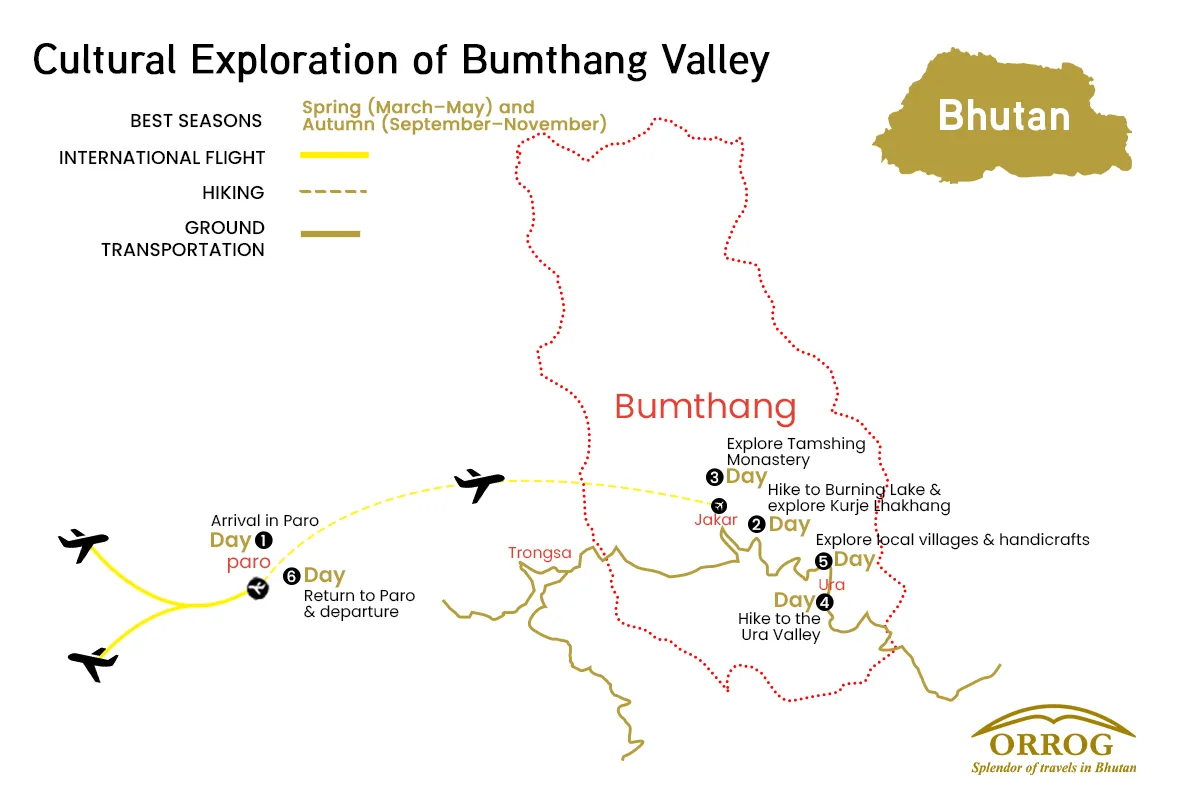
FAQs for Cultural Exploration of Bumthang Valley
Tamshing Monastery, Kurje Lhakhang, Jakar Dzong, and Burning Lake are some of the sacred places that you should not miss during your Bumthang cultural tour.
The local language of Bumthang is Bumthangkha, which is a Tibeto-Burman language. Dzongkha is the national language of Bhutan. But your guide will translate for you in English.
First, you will land at Paro International Airport. From Paro, we will take a scenic road trip through central Bhutan. You can also go by flight. The flight offers amazing aerial views of the Himalayan landscape.
You can explore Bumthang throughout the year. If you want pleasant weather, visit from March to May and September to November. These months are ideal for sightseeing, trekking, and attending local festivals.
The most famous Bumthang festival is the Jambay Lhakhang Drup, held in autumn. It includes sacred dances, fire rituals, and mask performances. This creates a unique cultural experience.
The Burning Lake, also identified as Mebar Tsho Lake, is a sacred water body. People believe that Pema Lingpa, a saintly person in Bhutan, had the discovery of the hidden treasures that he had only known. It's a common thing for the pilgrims to bring butter lamps and light them up at this holy place.
Yes, Bhutan is one of the safest nations for tourists. The local people of the valley give respect to tourists. They will help you with any type of problem.
You need a visa and all necessary permits for your trip. These documents can not be received on the day of your arrival, so they must be processed before coming here. After you book a trip with us, we will manage these papers for you. Your Bhutan visa is arranged by Orrog as part of the package.
The main way to come to Bhutan is through Paro International Airport, which is well-connected to cities like Bangkok, Delhi, Kathmandu, and Singapore. Most people arrive by air, but if you plan to come via road, you can enter through Phuentsholing, located on the southern border with India, which is the most commonly used entry point.
It is recommended to apply for the visa at least 20 days before your planned departure date so that there is enough time for processing your Bhutan visa, finalizing your itinerary, and arranging your guides and transportation. Although visa processing itself is relatively fast once payment is received, early preparation helps avoid delays and ensures availability, especially during peak seasons (spring and autumn).
You don’t require a passport-size photo for the visa, but it is wise to carry at least 2–4 recent passport-sized photographs during your trip. These may be needed for local permits, registration, or when applying for a local SIM card upon arrival in Bhutan.
Yes, you can lengthen your stay in Bhutan either before or after your trip. Bhutan’s tourism model requires visitors to pay a Sustainable Development Fee (SDF) and a daily package cost, so any extra days will involve additional charges. Extensions are a great opportunity to explore cultural sites in Paro, Thimphu, or even add another short trip or day hike.
Yes, Bhutan requires full tour payment in advance before your visa can be processed and issued. The government of Bhutan regulates this policy to ensure that all travel arrangements are confirmed through a licensed Bhutanese tour operator. We are a licensed tour operator that ensures you have everything you need for a trouble-free trip.
Any personal expenses are not covered in the package like:
- Tips for your guide and other staff
- Bottled drinks and snacks(personal expense)
- Souvenirs or local crafts
Credit cards are easily accepted in major cities like Paro and Thimphu. But in remote areas, you may not have access to a card or an ATM. So, it is best to carry some cash before heading for the trip.
Tipping is not mandatory, but it is a widely appreciated gesture and a customary way to show gratitude for good service. The tipping guideline would be to give USD 5-10 per day as a tip for the guides and other staff.
Paro International Airport is the only international airport in Bhutan. It is well connected by flights from cities like Bangkok, Delhi, Kathmandu, and Singapore.
Yes, airport pick-up and drop-off are included in the package. We will have your guide and driver meet you at the airport and transport you to your hotel.
While Bhutan's roads are mostly paved, some parts are narrow, winding, and occasionally affected by weather. However, we ensure your travel is safe, well-maintained, and driven by an experienced professional throughout the journey.
Once you arrive in Paro, we will arrange private ground transportation to the starting point as we pass through lush valleys and traditional villages. So, you don’t have to worry about any transportation services.
Yes, it is very safe to travel even with children in Bhutan. Roads are well-maintained, and the pace of travel is generally relaxed and child-friendly.
We will usually travel in comfortable, private vehicles with experienced drivers. All ground transportation is included in your package.
The Bhutanese Ngultrum is used in Bhutan. All local transactions during the trip will be in BTN.
US Dollars (USD) are generally accepted at larger hotels, souvenir shops, and tour operators, particularly in Paro and Thimphu. However, it’s advisable to convert your currency to BTN for general purchases in rural areas. Other currencies like the Euro or the Pound are not commonly accepted directly.
No, credit or debit cards are not accepted on the trip, as it takes you through remote regions with no banking or electronic payment access. All trip-related payments like accommodation, meals, permits, etc, are paid in advance.
You can exchange foreign currency at the Paro International Airport, at banks, or through licensed money changers in cities like Thimphu and Paro. It's best to exchange enough cash before heading out on the trip.
The national language is Dzongkha, but many Bhutanese also speak English. If you speak English and are worried about communicating with the local people, you will have your guide as a translator.
Yes, all licensed tour guides in Bhutan are required to speak fluent English. Many are also trained in other languages such as German, Japanese, or French. Communication during the trip will be smooth and clear in English.
Most signboards, tourist maps, and information brochures are written in English, especially in tourist destinations like Paro, Thimphu, and trailheads. Directional signs along routes are often labeled in both Dzongkha and English.
No, learning Dzongkha is not at all needed for the trip, but knowing a few basic words like "Kuzu zangpo la" (Hello) or "Kadrinche la" (Thank you) is a good way to interact with the locals.
Language barriers are minimal, as your guide will handle all communication with locals and support staff. Your guide will translate for you during your interaction with the locals.
To greet people, you can greet with locals “Kuzu zangpo la” (Hello) by performing a slight bow. Most common greetings include physical greetings, such as shaking hands less visible, especially in rural areas.
Yes, but remember to seek permission, especially when taking photos of monks, locals, or temples. Please note that clicking photos is not allowed at most religious sites.
Visitors should dress modestly and respectfully. This means:
- Covering shoulders and knees
- Removing hats and sunglasses
- Not wearing shorts or sleeveless tops
This applies to both men and women.
Yes, Bhutanese society is deeply rooted in Buddhism and tradition. Here are some key taboos:
- Do not point your feet at people or sacred objects
- Never touch anyone on the head, as it is considered sacred
- Walk clockwise around temples, stupas, and religious monuments
- Avoid public displays of affection
While gifts are not expected, they may be accepted graciously if given with respect. It is advisable to consult with the guide before giving out anything.
Bhutan typically uses Type C, Type D, and Type G electrical outlets. Standard safe voltage is 230V and frequency is 50Hz; therefore, ensure that your equipment is compatible with this voltage.
Indeed, it is highly advised to take along a universal travel adapter, particularly one to fit a variety of types of plugs, because plugs can be different in a hotel or a guesthouse.
Bhutan follows Bhutan Time (BTT), which is UTC/GMT +6 hours. This time zone remains consistent throughout the year.
No, Bhutan does not observe daylight saving time. The country maintains the same time year-round.
Bhutan is 30 minutes ahead of India. For example, 12:00 PM in India is 12:30 PM in Bhutan.
Yes, souvenirs can be bought in Paro or Thimphu before or after the trip.
Some popular souvenirs include hand-woven textiles (kira and gho fabric), prayer flags, thangka (religious scroll) paintings, handmade paper products, traditional masks, and Buddhist artifacts.
You can do some gentle bargaining in local street markets. However, in government-run shops and fixed-price stores, prices are usually non-negotiable.
Yes, you can easily purchase a SIM card upon arrival in Bhutan. We will assist you with the process, and you'll need a passport copy and a passport-sized photo.
No, internet access is not available during the trip. However, Wi-Fi is available in hotels in Paro and Thimphu before and after the trip.
Reviews & Ratings
-
Guarantee -
Thimphu,Bhutan -
975+17160228
Ready to Explore Bhutan?
Start your journey today and discover the magic of Bhutan with our expert guides and carefully crafted tours.
Book This Trip
-
No booking or credit card fees -
Best price guarantee -
Full customize trip
Ask a Question
Feel free to ask us anything about this tour. A travel expert will then get back to you as soon as possible
Ready to Explore Bhutan?
Start your journey today and discover the magic of Bhutan with our expert guides and carefully crafted tours.
